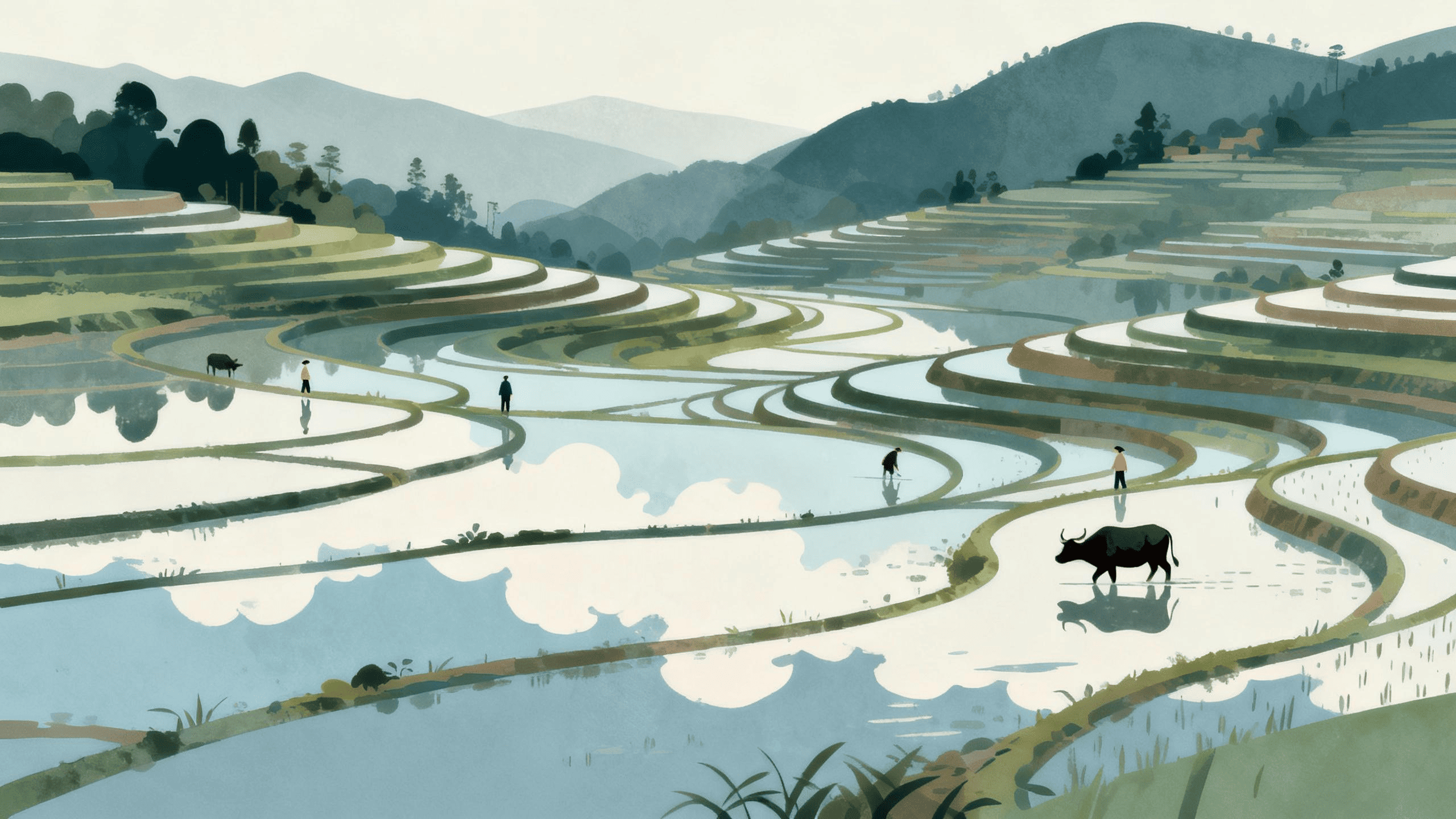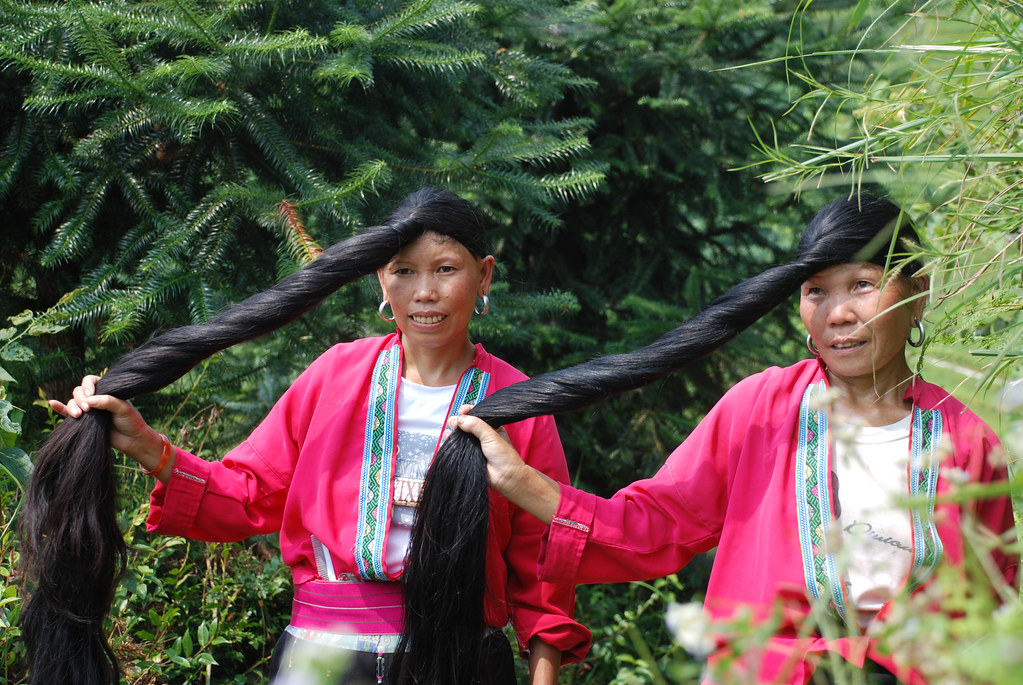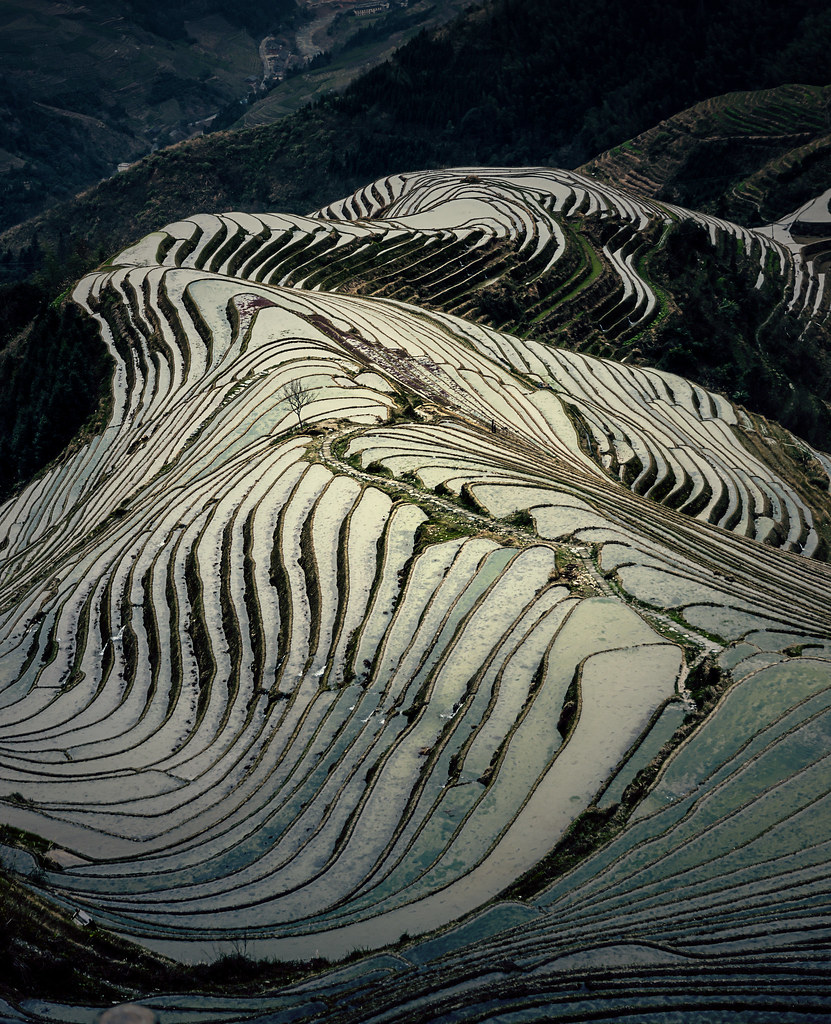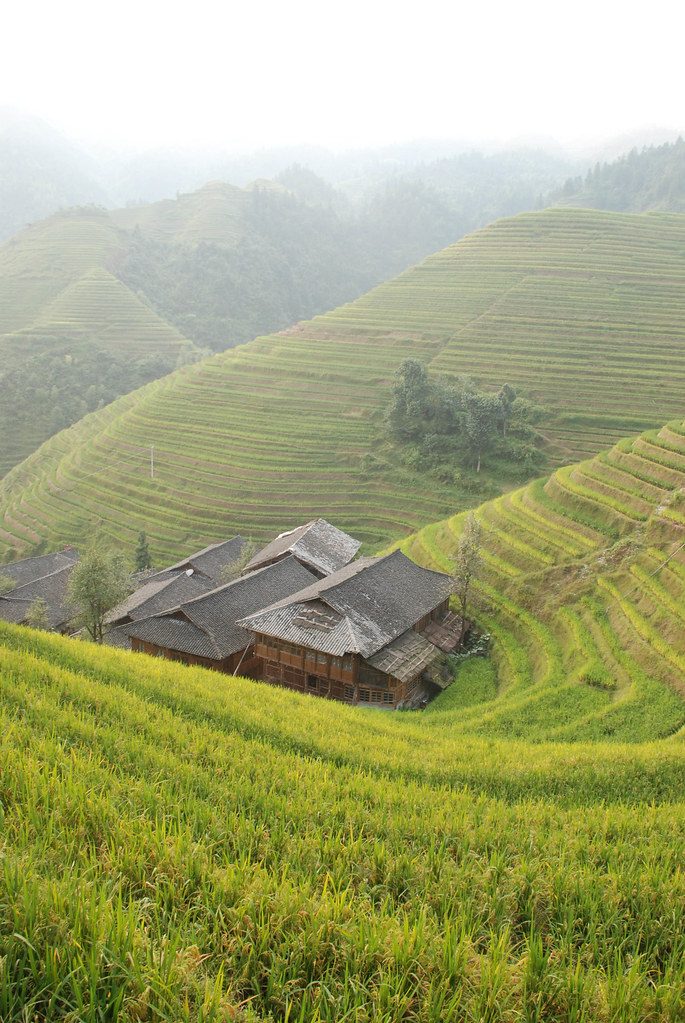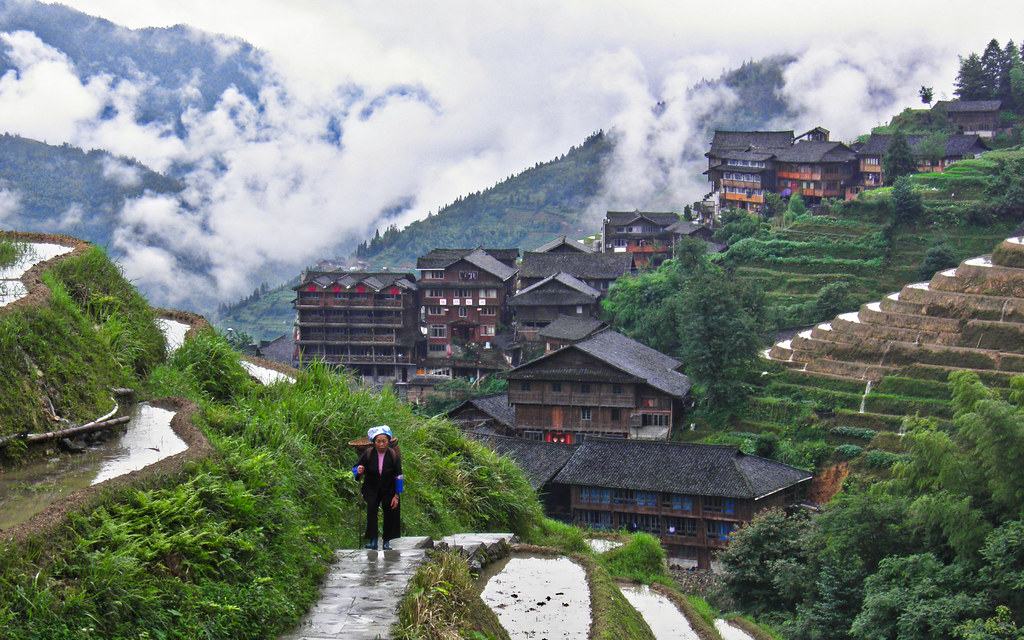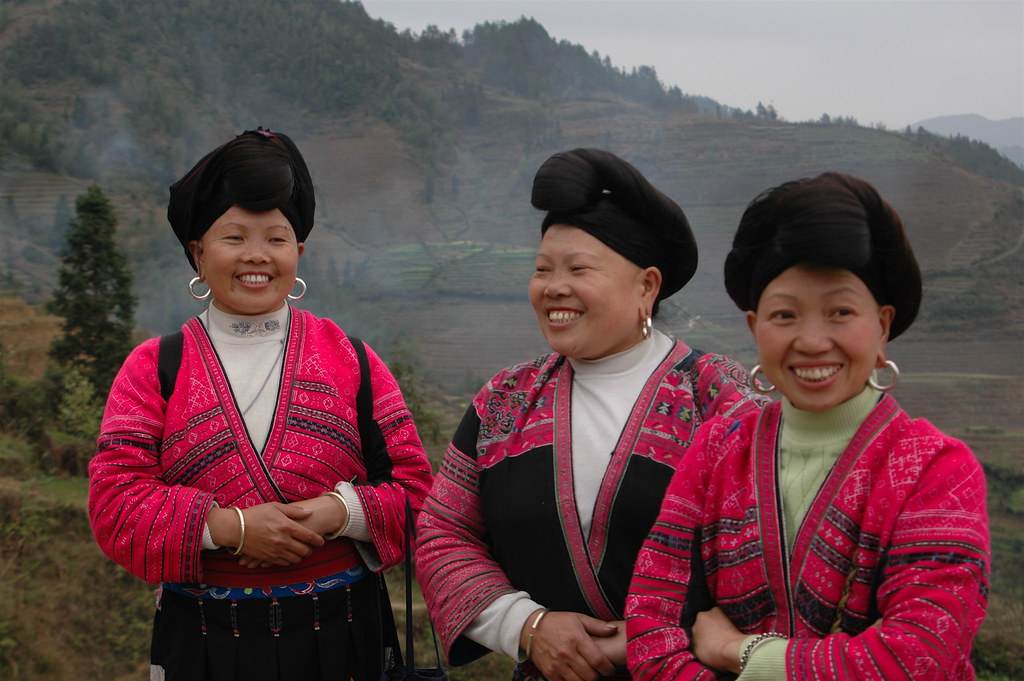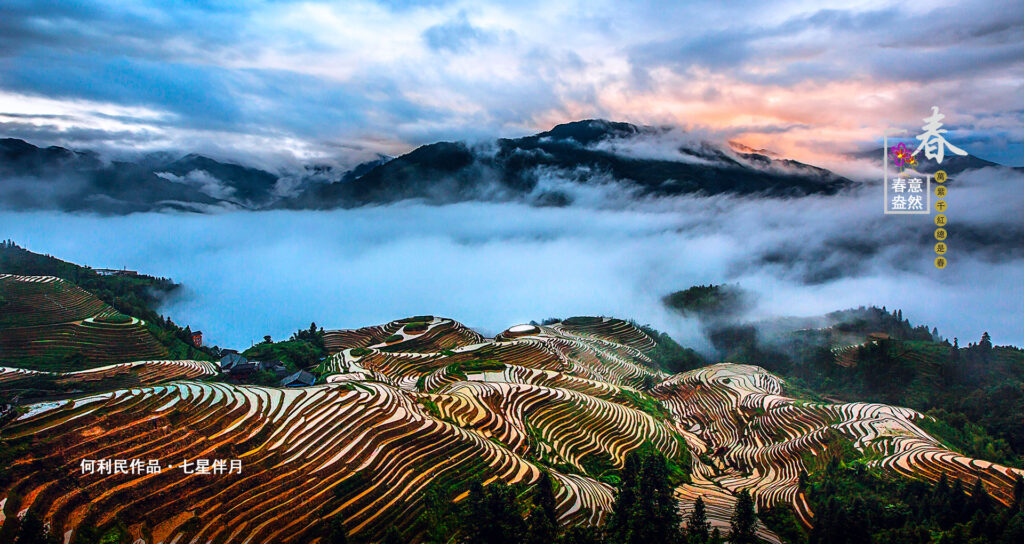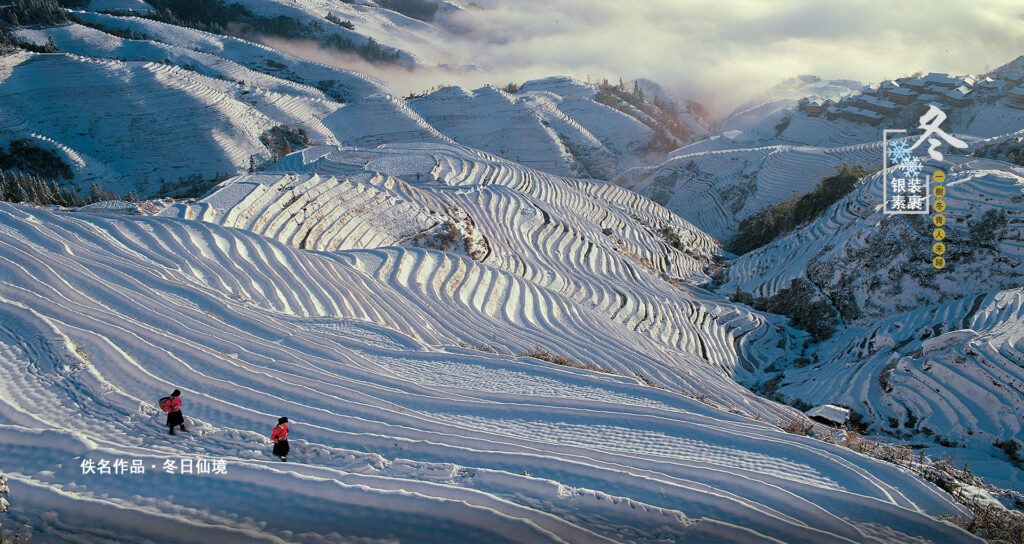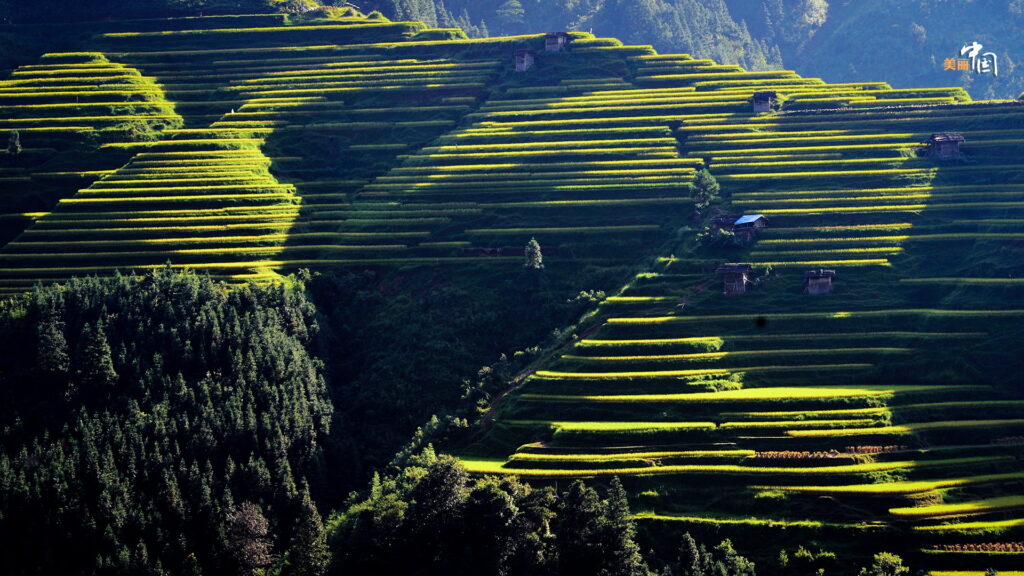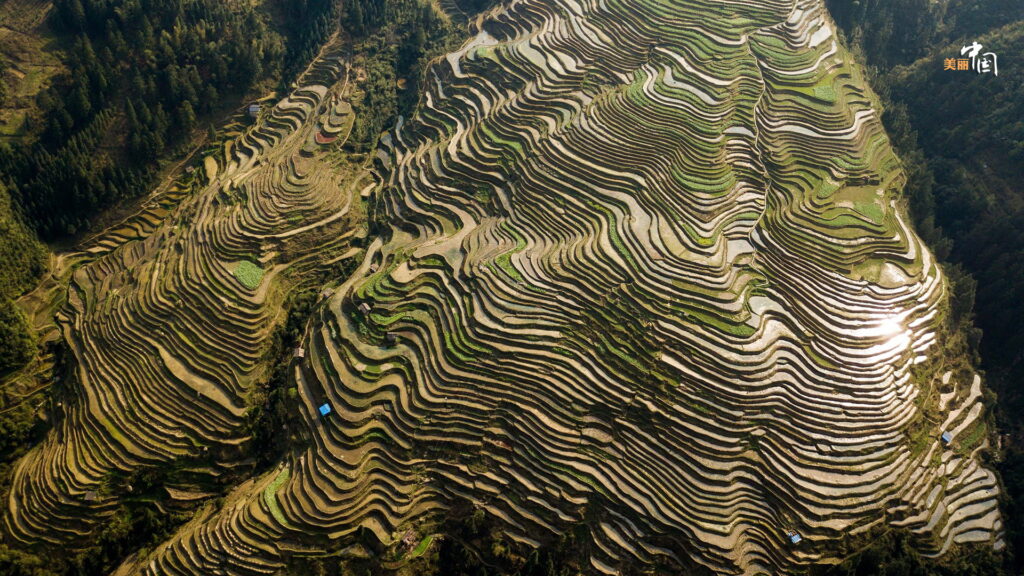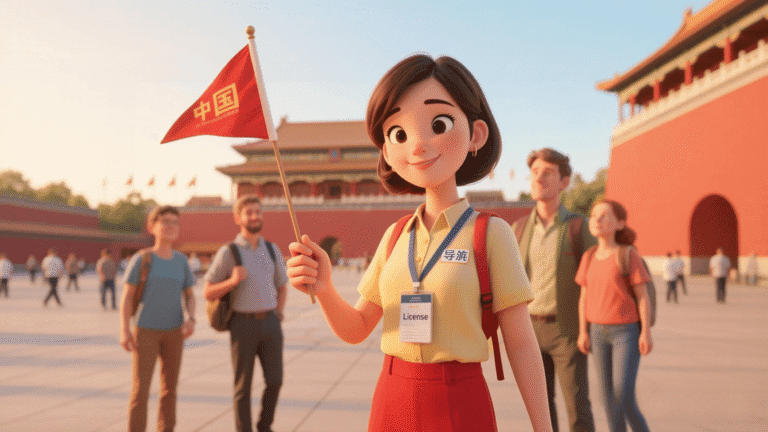Comprehensive Guide to Rice Terraces in China: What Most Guides Won’t Tell You
The alarm rang at 4:00 AM in complete darkness. We stumbled out of our guesthouse in Duoyishu, joining dozens of photographers already racing toward the viewing platform. By 5:30 AM, every spot with a clear sightline was occupied. What followed wasn’t just a sunrise—it was a masterclass in why timing matters more than any guidebook suggests when visiting China’s rice terraces.
Most travel guides paint rice terraces as postcard-perfect destinations. We’re taking a different approach based on extensive field experience across six major terrace sites. This comprehensive guide reveals practical realities, hidden challenges, and insider strategies that help travelers make informed decisions rather than romantic assumptions.
Table of Contents
Why Rice Terraces in China Matter Beyond Photography
The Honghe Hani Rice Terraces were inscribed as UNESCO World Heritage in 2013, covering 16,603 hectares. Yet few visitors understand what makes these landscapes truly exceptional beyond their visual beauty.
The terraces embody a four-element ecosystem discovered over centuries of trial and error. Forests capture rainfall feeding mountain springs. Villages occupy the transitional zone between forests and fields. Water flows through hundreds of kilometers of handmade channels requiring constant maintenance. Terraces transform impossibly steep slopes into productive farmland through ingenious engineering.
During our April visits, we’ve watched Hani villagers repair irrigation channels damaged by winter freezes. This maintenance work happens invisibly behind every stunning photograph. The channels require intimate geographical knowledge passed through generations—knowledge that younger villagers increasingly lack as they migrate to cities seeking higher incomes.
Over 1,300 years, the Hani people developed intricate channel systems bringing water from forested mountaintops to terraces. Modern pressures threaten this continuity more than any natural disaster could.
Yuanyang Rice Terraces: Managing Expectations and Reality
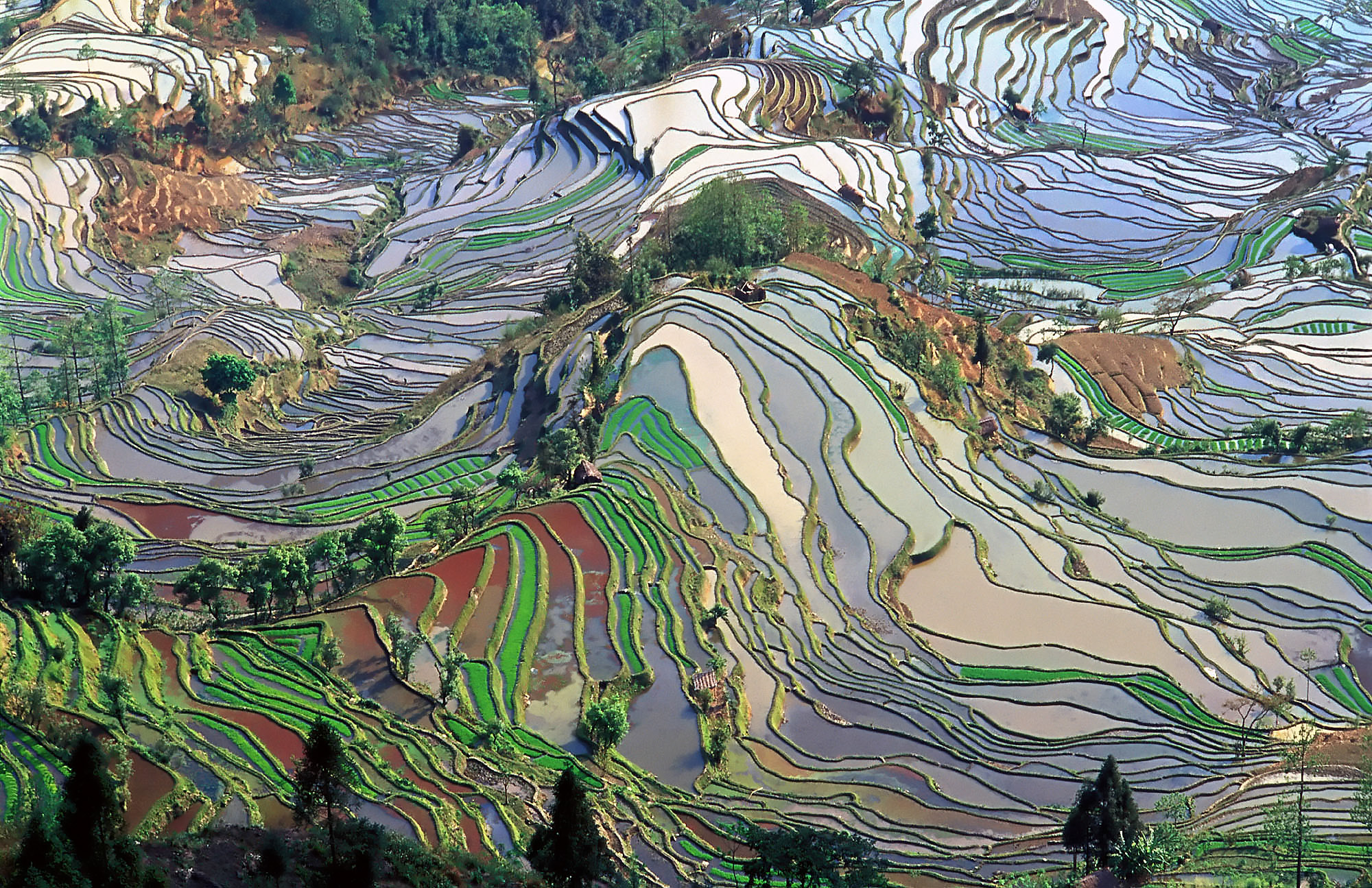
Yuanyang dominates rice terrace conversations for good reason. The terraces span 114 square kilometers, with single slopes containing up to 3,000 steps, stretching from 400 meters at river valleys to 1,800 meters on mountains. The scale genuinely staggers first-time visitors.
However, Yuanyang’s popularity creates challenges rarely mentioned in promotional materials. Entry costs 100 RMB per person covering four spots: Duoyishu, Bada, Laohuzui, and Jingkou Folk Village. But the real investment comes in time, patience, and weather luck.
The Weather Gamble Nobody Discusses
Weather determines everything at Yuanyang, yet most guides simply state “best season is December to March” without explaining the implications. January to March offers optimal photography when terraces fill with water after harvest, with the scenery extremely spectacular in early spring featuring seas of clouds, wild cherry blossoms, and peach blossoms.
What they don’t mention: Yuanyang weather operates on its own logic. We’ve experienced three complete weather cycles in single days—brilliant sunrise followed by dense fog, then afternoon clarity, then evening rain. The weather is unpredictable and sometimes dense fog could obscure views, making it best to choose optimal routes based on daily conditions.
Build a minimum three-day buffer into your Yuanyang plans. Two days isn’t enough. Five days gives comfortable margin for weather variability. We learned this lesson after our first visit when fog obliterated every sunrise attempt for two consecutive mornings.
Platform Politics at Duoyishu
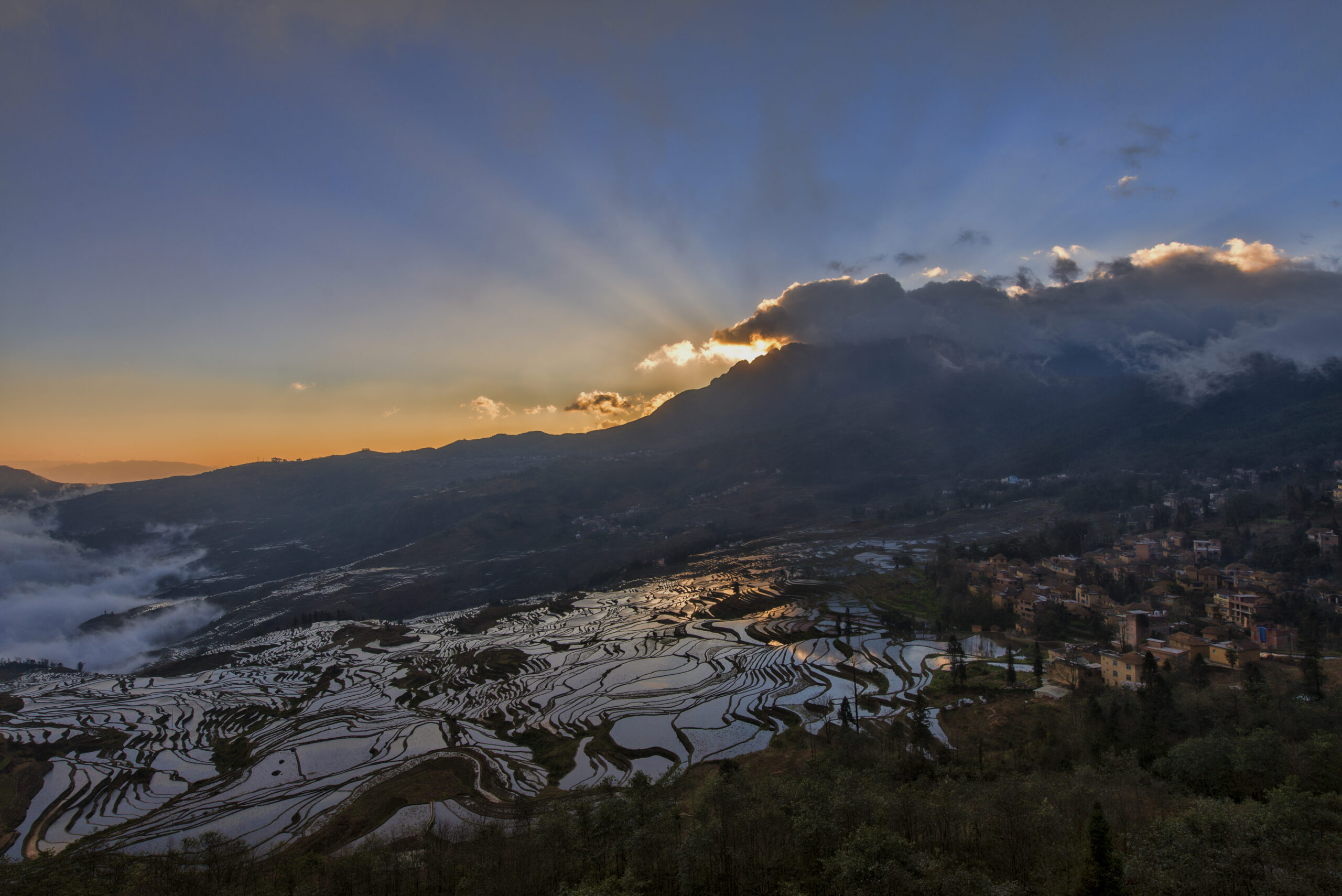
Duoyishu is considered the best place for sunrise photography, with the platform opening at 6 AM, and it’s recommended to arrive before opening to secure good spots. This understates reality considerably.
Serious photographers arrive at 4:00 AM or earlier during peak season, staking out positions with tripods and camping chairs. By 5:30 AM, the platform resembles a photography convention with zero personal space. By opening time, late arrivals get relegated to back rows behind a wall of camera equipment and selfie sticks.
The alternative? Hire a local guide who knows less-crowded vantage points offering comparable views. During our third Yuanyang visit, our Hani guide led us to a terraced ridge fifteen minutes’ hike from Duoyishu. We watched sunrise from a location with three other people instead of three hundred. The photographs captured authentic farming life rather than tourist crowds.
Transportation Realities From Kunming
Direct buses run from Kunming South Bus Station to Yuanyang Xinjie Town at 10:20, 12:30, and 19:00, taking 6-7 hours and costing 130-150 RMB per person. The journey winds through mountain roads that make some passengers nauseous. Bring motion sickness medication if susceptible.
The bigger issue involves getting between viewing areas once you arrive. Duoyishu Rice Terraces is about 23 kilometers southeast of Xinjie Town, while Bada sits 15 kilometers from Xinjie and 8 kilometers from Duoyishu. Public transport between sites is minimal. Most travelers either hire private drivers for 300 RMB daily or join carpools organized by guesthouses for 50-100 RMB per trip.
We recommend the private driver option despite higher costs. The flexibility proves invaluable when weather suddenly improves at unexpected times, or when you want to linger at locations longer than carpool schedules allow.
Accommodation Strategy That Actually Works
Generic advice suggests “stay near the terraces for sunrise access.” More specifically: Hotels within the terrace area offer better quality and views, with staying in Duoyishu allowing sunrise viewing from balconies though prices are relatively higher.
True, but incomplete. Duoyishu guesthouses range from basic 100 RMB rooms with unreliable hot water to 600 RMB rooms with floor-to-ceiling windows facing the terraces. The price difference buys comfort, not significantly better views. Mid-range options around 250-350 RMB typically offer the best value—decent facilities, terrace views, and friendly hosts who provide local intelligence about weather patterns and viewing conditions.
Book at least two months ahead for January-February visits. Peak season sells out completely, leaving last-minute travelers in Xinjie Town facing hour-long early morning drives to reach viewing platforms.
The Blue Terraces Secret
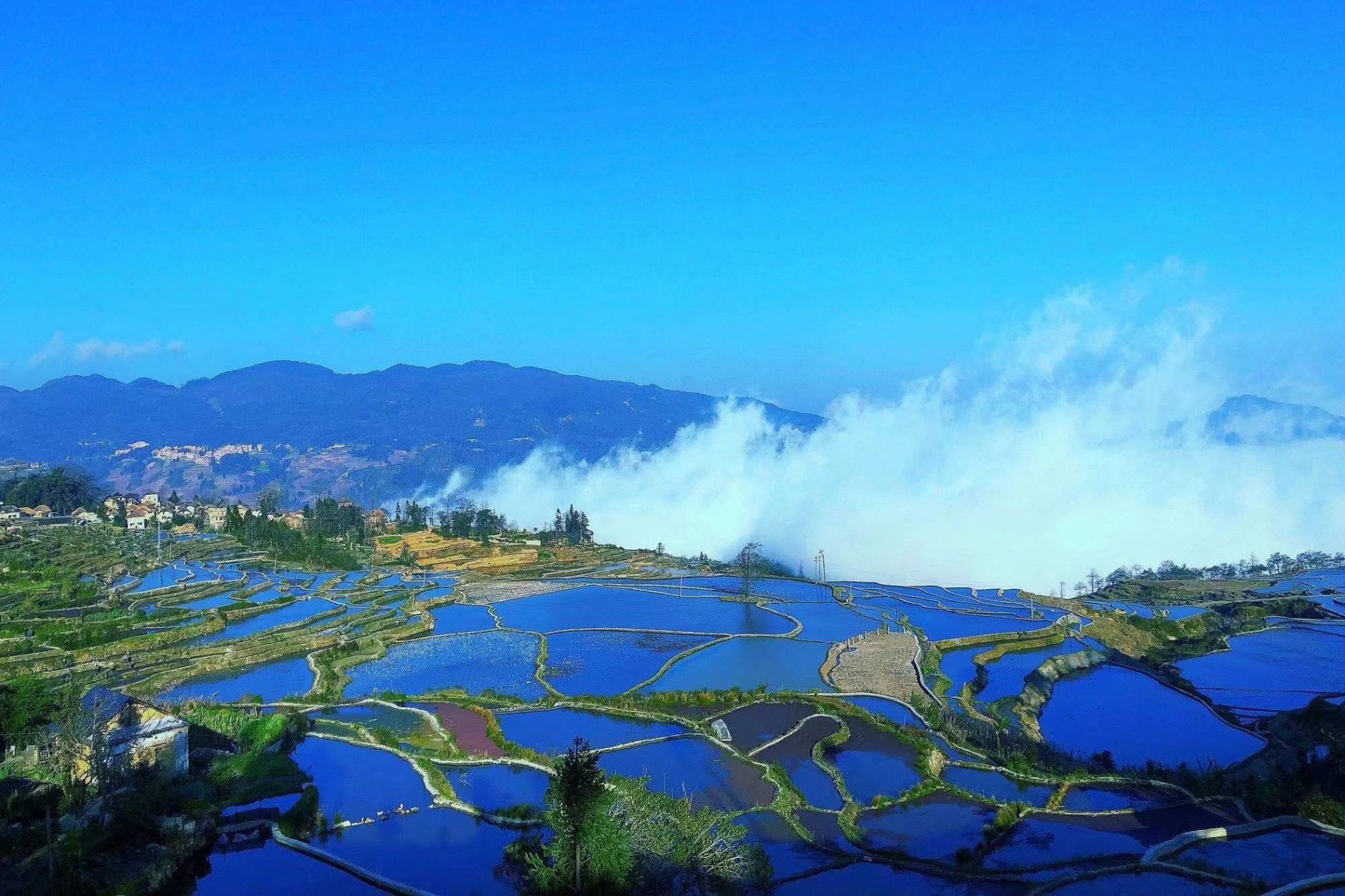
Aichun Terraces, locally called “Blue Terraces,” are hidden in Yuanyang’s terraced hills, known for otherworldly blue tones created by mineral-rich spring water that shifts between powdery sky-blue and misty indigo. With few visitors, every angle feels like a hidden secret.
We discovered Aichun by accident during our second visit when fog obscured Duoyishu completely. Our guesthouse host suggested trying Aichun instead. The mineral-blue water creates ethereal photography completely different from classic golden-hour terrace shots. The deepest blues appear on cloudy days and the softest shades at dawn.
Aichun receives perhaps 5% of Yuanyang’s visitor traffic. The trade-off? No viewing platforms, no facilities, no clear trails. Finding optimal angles requires exploration and willingness to walk muddy paths between fields. Bring appropriate footwear.
Longji Rice Terraces: Accessibility Versus Authenticity

Longji Rice Terraces sit 76-100 kilometers north of Guilin, representing one of the world’s earliest rice cultivation sites with terraced farming systems shaped during China’s Qin-Han dynasties over 2,300 years ago. The location offers dramatically easier access than remote Yuanyang.
The area divides into three spots—Jinkeng Red Yao Terraced Fields, Ping’an Zhuang Terraced Fields, and Ancient Zhuang Village, with a single entrance ticket costing 80 RMB covering all three areas. This integrated ticketing creates decision paralysis for first-time visitors uncertain which areas merit their limited time.
Dazhai Versus Ping’an: The Debate Nobody Settles
Travel forums endlessly debate Dazhai versus Ping’an. Our experience suggests the question depends entirely on your priorities and physical capabilities.
Dazhai (Jinkeng) offers cable car access directly to Viewing Platform No. 3 at Golden Buddha Peak for 55 RMB one-way or 100 RMB round-trip. This convenience attracts tour groups and travelers with limited mobility or time. The cable car eliminates a challenging uphill hike but deposits you at the most crowded viewpoint.
Three high viewing platforms exist in Dazhai—Xishan Shaole (Platform No. 1, best for sunrise), Large-Scale Thousand-Layers Terraces (Platform No. 2, superb sunrise and sunset), and Golden Buddha Peak (Platform No. 3, cable-car accessible). Reaching Platforms 1 and 2 requires serious hiking through steep stone pathways. The climb to Platform 1 takes roughly three hours from the base depending on fitness levels.
Ping’an offers more developed infrastructure with the trade-off of heavier commercialization. Two main viewpoints exist—Nine Dragons and Five Tigers (offering stunning 3D effects) and Seven Stars with Moon (surrounded by homestays, ideal for sunrise views). A shuttle bus reaches Nine Dragons and Five Tigers for 50 RMB round-trip, making Ping’an more accessible for casual visitors.
The honest assessment? Dazhai provides more dramatic scale and photogenic depth. Ping’an offers better convenience and village atmosphere. We prefer Dazhai for photography trips and Ping’an for cultural immersion visits. Travelers with 2-3 days should experience both areas.
The Seasonal Timing Trap
Late April to late June shows irrigated terraces resembling overlapping silver belts, while mid-September until October 20th offers golden rice terraces before harvesting begins. These are the documented peak seasons.
What guides omit: Visiting rice terraces in November is not recommended as fields will be barren with no rice and irrigation has not begun, making for a less interesting experience. Yet November still attracts uninformed tourists expecting picturesque landscapes.
We visited Longji in late September 2025 specifically targeting the golden harvest season. The timing proved ideal—warm weather, stable conditions, stunning golden fields. However, harvest proceeds rapidly. Fields showing golden magnificence one week appear completely harvested the next. To be 100% sure about when harvesting begins, contact the hotel where you plan to stay and ask for exact timing.
This advice proves critical. Harvesting schedules vary by field, elevation, and weather patterns each year. A phone call to your accommodation two weeks before arrival can prevent disappointing timing misses.
The Cultural Element: Red Yao Long Hair
The majority of Dazhai residents belong to the Red Yao ethnic group, renowned for their long hair, and visitors should observe Red Yao women’s beautiful traditional attire and elegantly coiled hair. This cultural dimension distinguishes Longji from purely agricultural terrace sites.
The reality involves more complexity than touristic hair displays suggest. Red Yao women traditionally never cut their hair, growing it to extraordinary lengths exceeding one meter. However, younger Red Yao women increasingly adopt modern hairstyles, and some “traditional” demonstrations cater specifically to tourist expectations.
We’ve observed genuine cultural preservation alongside calculated tourism performance. The distinction matters less than respecting the communities maintaining these traditions under rapidly changing economic pressures. When photographing Red Yao women, always ask permission first and offer small payments (10-20 RMB) for posed photographs. This compensates for time and acknowledges that tourism impacts daily rhythms.
Jiabang Rice Terraces: The Hidden Gem With Hidden Challenges
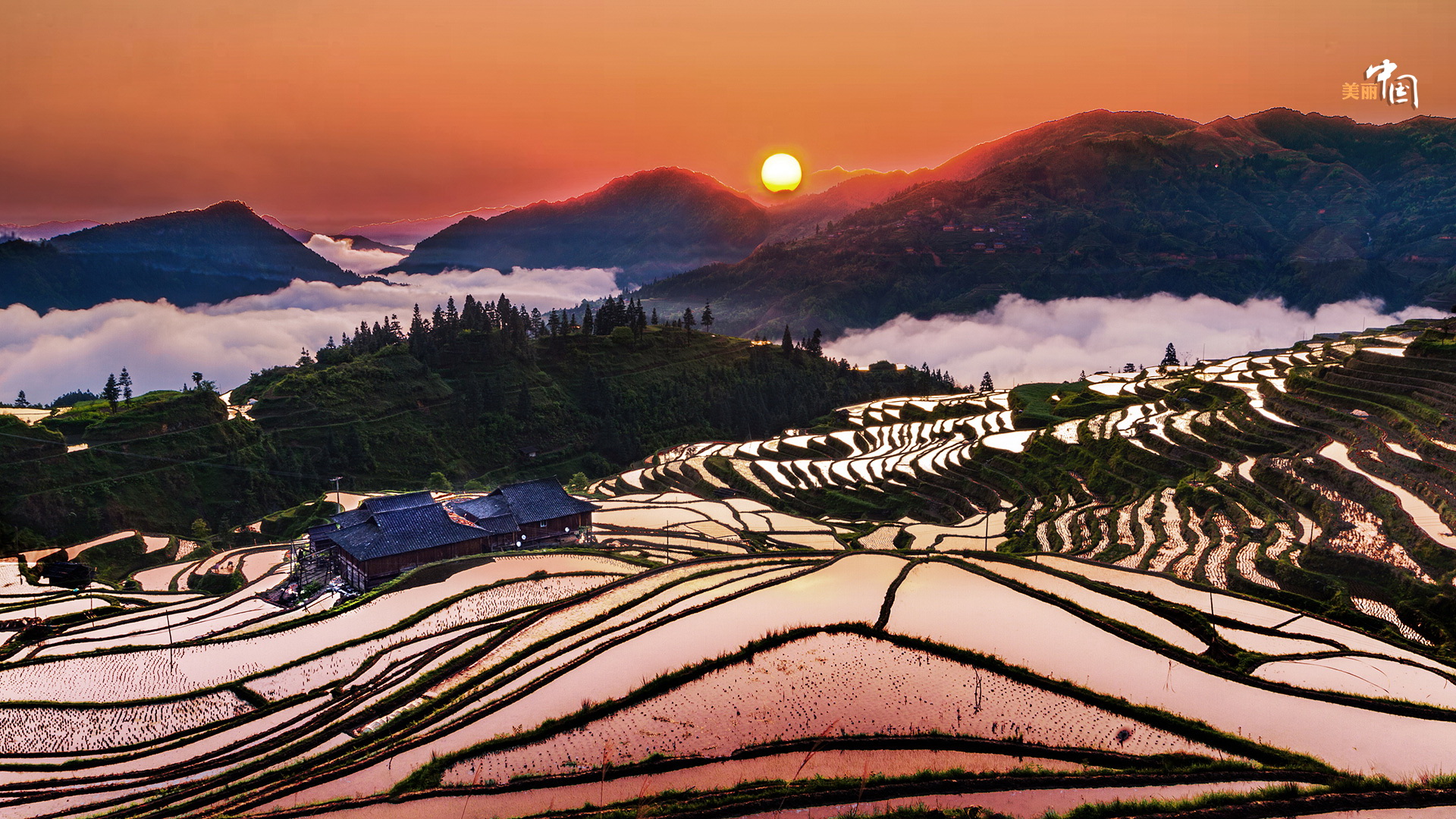
Jiabang represents everything adventurous travelers claim to seek—minimal crowds, authentic village life, stunning landscapes. Though equally gorgeous if not more than other terraced rice fields in China, Jiabang is less famous, offering tranquil and less-touristed experiences with rolling terraces and colorful reflections.
The catch? Getting there tests patience considerably.
Transportation requires flying to Guiyang, then taking a bus or car to Congjiang County, approximately 6-7 hours. From Congjiang, local transport to Jiabang adds another 2 hours. The journey from major transport hubs to actual viewing areas easily consumes 10-12 hours of travel time.
Once you arrive, Jiabang rewards persistence. The rice-fish-duck polyculture system creates genuinely sustainable agriculture observable in daily practice rather than museum displays. We watched farmers tending fields where rice, carp, and ducks coexist symbiotically—ducks eat pests, fish fertilize water, everything contributes to the ecosystem.
Accommodation Reality Check
Accommodation in Jiabang’s Jiache Village and surrounding areas involves basic conditions with inflated prices reflecting limited options. Expect to pay 200-300 RMB for simple rooms that would cost 100 RMB elsewhere. Hot water reliability varies. Western toilets aren’t universal. Bedding quality ranges from acceptable to questionable.
We’re not complaining—remote locations naturally command premium pricing. But travelers expecting rustic luxury will face disappointment. Jiabang accommodations offer functional shelter with spectacular morning views, nothing more.
Food options similarly reflect remote village limitations. Local restaurants serve simple dishes featuring mountain vegetables, free-range chicken, and rice-fish preparations from the polyculture system. Don’t expect extensive menus or dietary accommodation. Vegetarians should communicate needs clearly and repeatedly.
The Dongpeng Viewing Strategy
Most Jiabang photography happens at Dongpeng Rice Terrace in Dangniu Village. The best vantage point sits on a local family’s rooftop (Mr. Wang’s family charges 5 RMB per person). This “secret” appears in every recent Jiabang guide, so expect company during peak mornings.
The genuine secret involves timing. April through June offers water-filled terraces with vibrant reflections when mist creates photographer’s paradise conditions. September to October shows golden harvest scenes against the green mountains. Both seasons provide exceptional photography opportunities.
However, Jiabang suffers the same weather unpredictability affecting all southern China mountain regions. Morning mist creates atmosphere but can also completely obscure views. Build flexibility into schedules allowing multiple sunrise attempts.
Cultural Immersion Reality

Jiabang’s Miao and Dong peoples maintain traditional lifestyles less influenced by tourism than commercialized sites. Unique Miao-style wooden houses (Diaojiaolou) dot the landscape, and villagers wear traditional cultural outfits during daily activities, not just for tourist performances.
This authenticity cuts both ways. Genuine cultural experiences require respectful engagement, language bridges (Mandarin at minimum), and patience with cultural differences. Tourist infrastructure barely exists. English speakers are rare. Navigation requires asking locals for directions repeatedly.
We found Jiabang rewarding precisely because of these challenges. The remoteness filters out casual tourists, leaving visitors genuinely interested in agricultural heritage and minority cultures. Our September visit included participating in rice harvest using traditional hand methods unchanged for centuries—backbreaking work providing profound appreciation for farmers’ daily reality.
What Travelers Say: “It’s a pretty long drive and winding road to come here. No proper viewing point to allow better photo taking, but I think this is as natural and original as it is today. Overall nice—do come at different seasons to see different things.” – Visitor December 2024
Another traveler noted: “Two and a half hours each way from Rongjiang but it was worth the drive and time. Beautiful rice paddy scenery once you get there and interesting villages along the way. A real adventure into a misty Shangri-La.“
Our team has led multiple expeditions to Jiabang specifically for clients seeking to document disappearing agricultural traditions. The polyculture system here represents living heritage that may not survive another generation without economic support from conscious tourism.
Ziquejie Rice Terraces: The Ancient Pioneer That Time Forgot
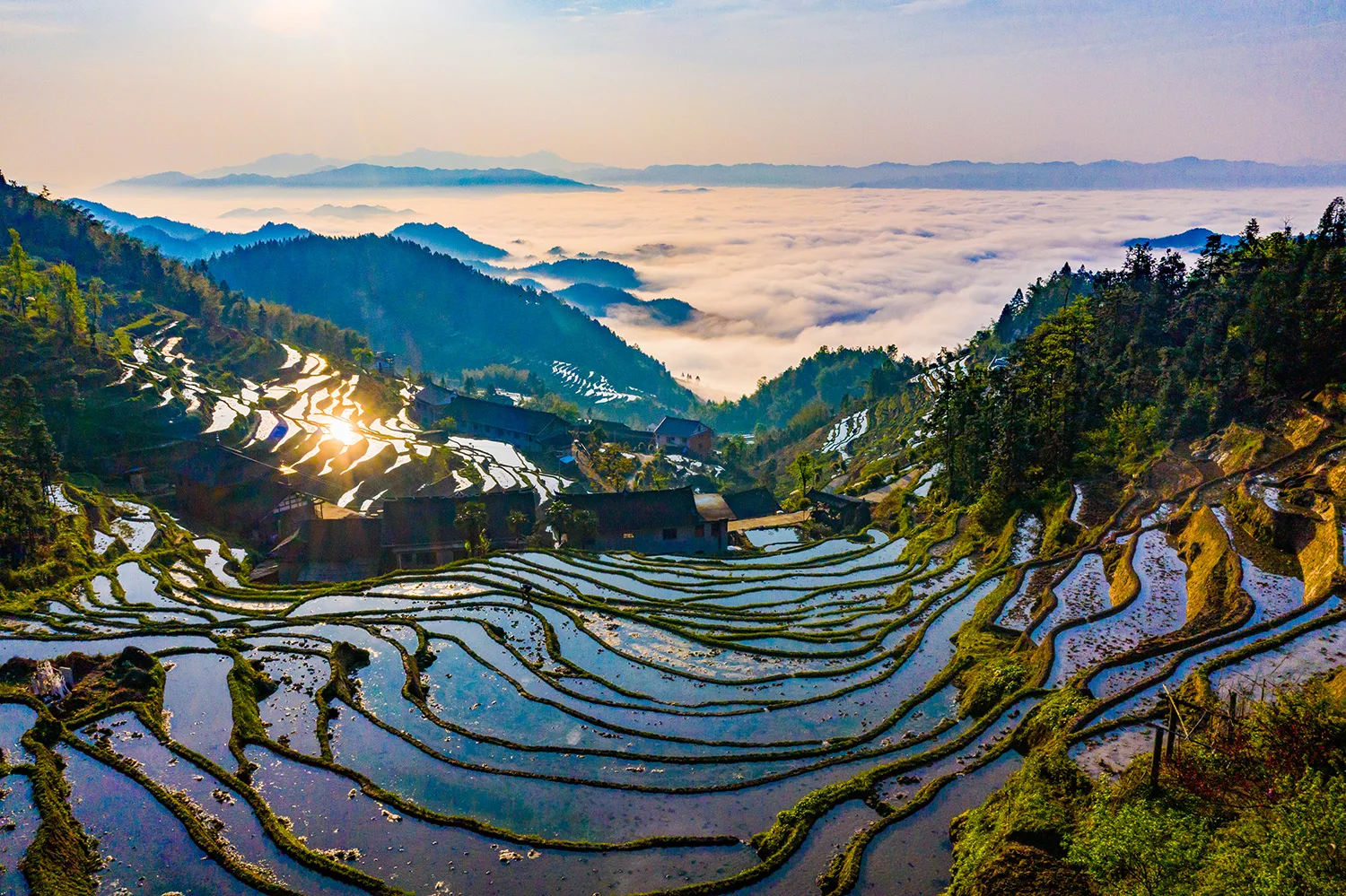
Ziquejie Rice Terraces, first cultivated during Qin Dynasty (221BC-206BC), represents China’s oldest rice terrace system. This historical significance attracts agriculture enthusiasts and history buffs seeking less-photographed landscapes.
The terraces are unusual, relying on heavy rainfall for irrigation rather than uphill water sources. This natural irrigation system represents remarkable ancient engineering comparable to famous historical water management projects, accomplished without modern technology.
The challenge? Ziquejie’s remoteness exceeds even Jiabang. Located in Hunan Province, reaching the terraces from Changsha requires approximately 3.5 hours by car to Xinhua County, then another hour to the actual terrace areas. Public transportation exists but involves multiple connections and unpredictable schedules.
More problematically, even local drivers and guides may be unfamiliar with Ziquejie locations. Road conditions include bumpy mountain paths with minimal signage. We recommend Ziquejie only for adventurous travelers comfortable navigating ambiguous situations with limited English language support.
Late March to early May is best for water-filled mirror-like terraces, late May to early August for green fields, and October for golden harvest. The seasonal windows are brief and weather-dependent.
During our October visit, we experienced stunning golden terraces against mountain backdrops with virtually zero other tourists. The solitude felt simultaneously peaceful and slightly unnerving—we were genuinely off-the-beaten-path. Navigation involved asking villagers for directions using Google Translate and hand gestures.
Ziquejie lacks tourist facilities entirely. Accommodation requires staying in nearby villages with basic guesthouses. Restaurants serve local Hunan cuisine heavy on spice and oil. Photography requires self-sufficiency with equipment, food, and supplies.
The reward? Photographs and experiences impossible at commercialized sites. Genuine interactions with farmers surprised by foreign visitors. Agricultural practices unchanged for centuries. Landscapes and cultures preserved through isolation rather than UNESCO designation.
Seasonal Planning: Beyond the Marketing Hype
Every rice terrace guide proclaims “beautiful all year round” while simultaneously recommending specific seasons. Let’s clarify the reality based on what each season actually delivers.
When to Visit: Honest Season-by-Season Assessment
Season | Months | Landscape | Weather | Crowds | Photography | Comfort | Best For |
|---|---|---|---|---|---|---|---|
Winter | Dec-Feb | Water-filled mirrors at Yuanyang | Cold, damp, foggy | Low | Excellent (sea of clouds) | Challenging (bone-chilling cold) | Serious photographers |
Spring | Mar-May | Flooded fields, blossoms | Unpredictable rain | Moderate (spikes in May) | Very good (reflections) | Variable | Balanced experience |
Summer | Jun-Aug | Lush green growth | Hot, humid, storms | Low (except July-Aug) | Good (different aesthetic) | Uncomfortable heat | Budget travelers |
Autumn | Sep-Oct | Golden harvest | Stable, pleasant | Very high | Excellent (golden waves) | Most comfortable | Most visitors |
Winter Photography Magic and Physical Misery
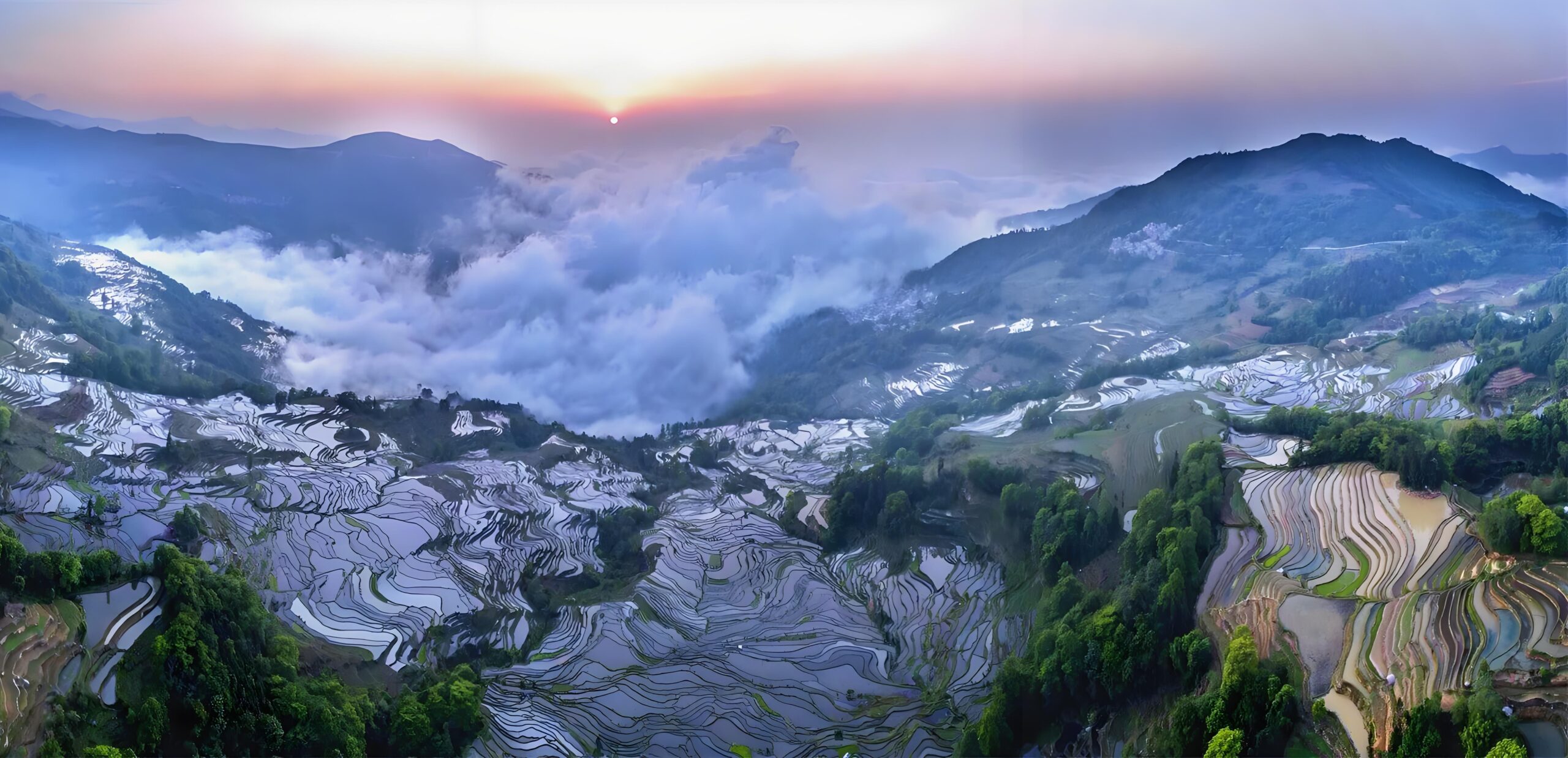
December to March is best for photography when terraces are irrigated, with January-February ideal when sea of clouds appears frequently. The water-mirror effect creates photography that dominates rice terrace portfolios.
The uncomfortable truth: Winter in southern China mountain regions involves damp cold penetrating every layer of clothing. Temperature varies greatly between day and night, so it’s best to take a warm coat, especially for capturing sunrise with an early start.
“Take a warm coat” understates requirements. We’re talking multiple thermal layers, waterproof outer shells, warm gloves, and insulated footwear. The combination of humidity, altitude, and early morning temperatures creates bone-chilling conditions. Photographers standing motionless for hours experience cold that no single coat can prevent.
Winter also brings minimal crowds, significantly lower accommodation prices, and peaceful viewing experiences. But comfort levels drop correspondingly. Choose winter for photography priorities; avoid it for comfortable sightseeing.
Spring’s Hidden Costs
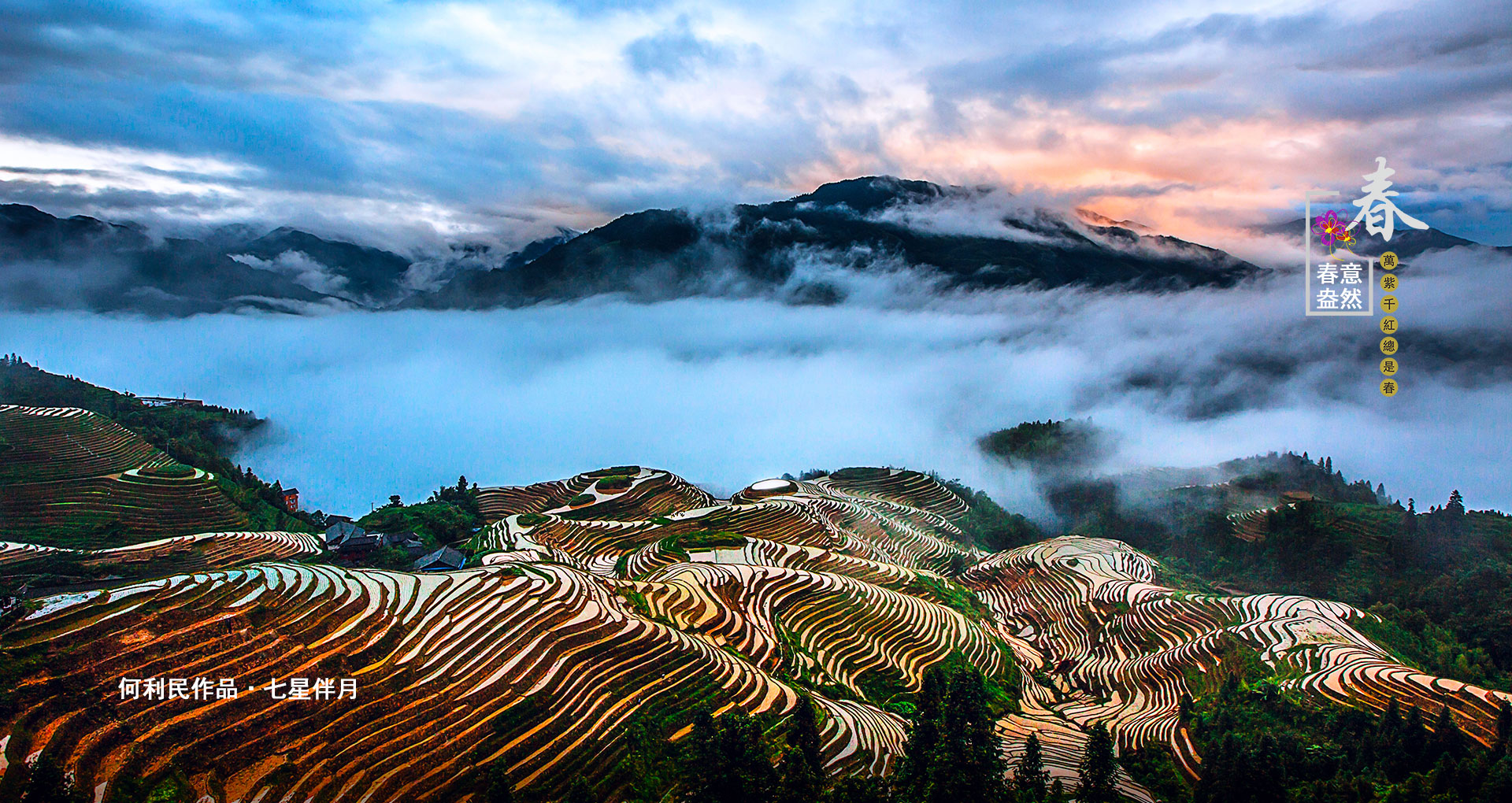
Spring offers water-filled terraces with blooming flowers creating postcard-perfect scenes. Early spring from late February to March shows extremely spectacular scenery with seas of clouds, wild cherry blossoms, wild kapok, and pink peach and white pear blossoms.
The catch? Spring in China means unpredictable weather and traveling masses during extended holidays. March and April involve frequent rain showers requiring waterproof gear constantly. May includes Labor Day holiday week when domestic tourism peaks and prices spike.
We’ve experienced both sides of spring travel. Late February offers stunning flowering terraces with manageable crowds. Early April similarly provides excellent conditions. But mid-April through early May becomes challenging with elevated prices, full accommodations, and crowded viewing platforms.
Summer Growth and Sweltering Heat
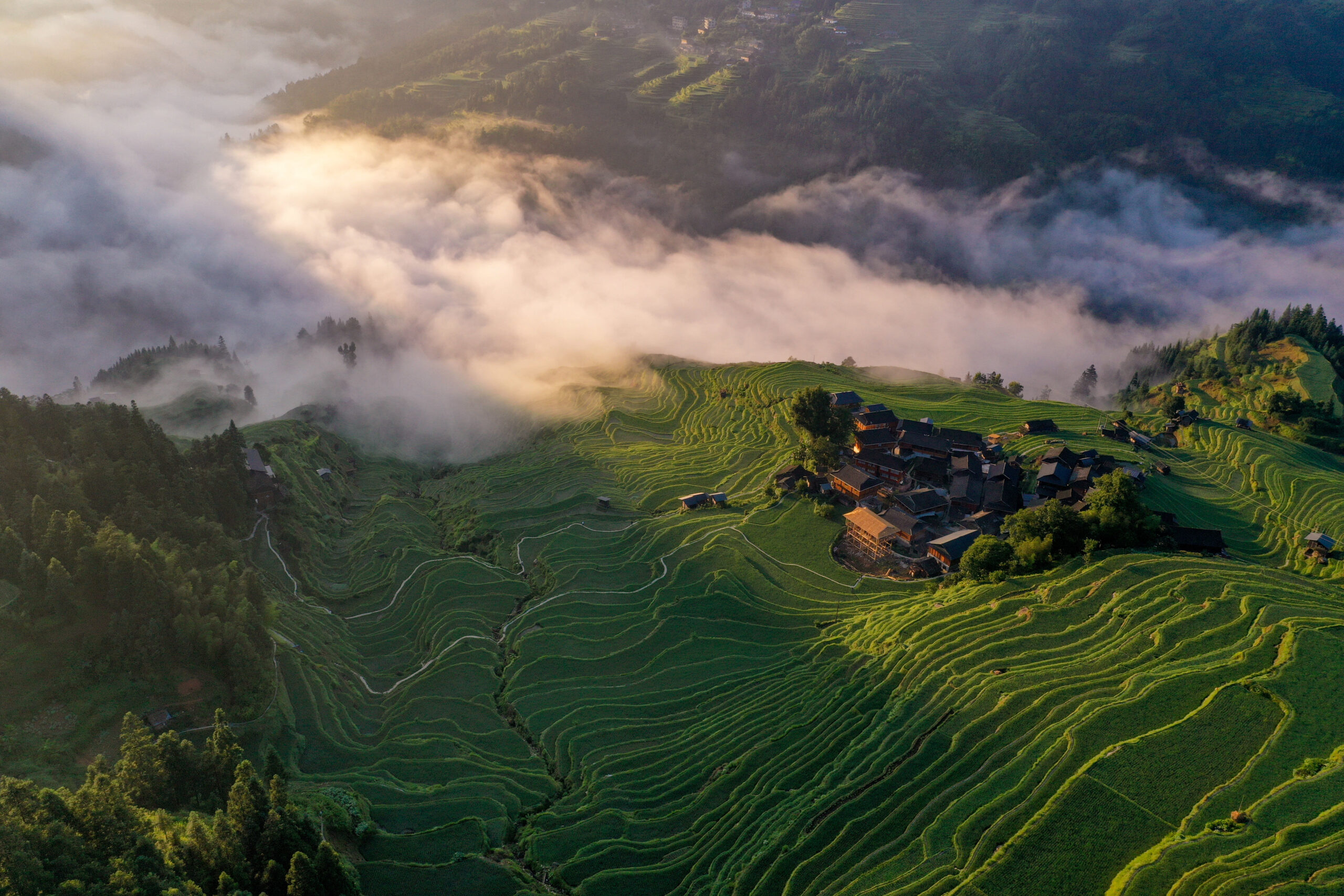
June through August shows lush green rice growth creating vibrant landscapes completely different from golden harvest or water-mirror scenes. The green wave rolling across mountainsides provides unique photography opportunities.
However, summer in southern China involves oppressive heat and humidity. Hiking becomes sweat-soaked ordeals. Afternoon thunderstorms arrive regularly. Some travelers find the conditions unbearable.
Summer’s advantage involves low season pricing and minimal crowds outside Chinese school holidays in July-August. For travelers prioritizing budget and solitude over optimal weather, summer provides acceptable trade-offs.
Autumn’s Golden Window

Mid-September until October 20th offers golden rice terraces before harvesting begins, with late September to early October optimal. This represents the most popular season attracting maximum visitor numbers.
The popularity occurs for good reason—pleasant temperatures, stable weather, spectacular golden landscapes, and minimal rain. Autumn delivers exactly what promotional photographs promise.
Book accommodations 2-3 months in advance for September-October visits. Expect premium pricing, crowded viewing platforms, and competition for optimal photography positions. Accept these inconveniences as the cost of visiting during genuinely ideal conditions.
Photography Strategies That Produce Results
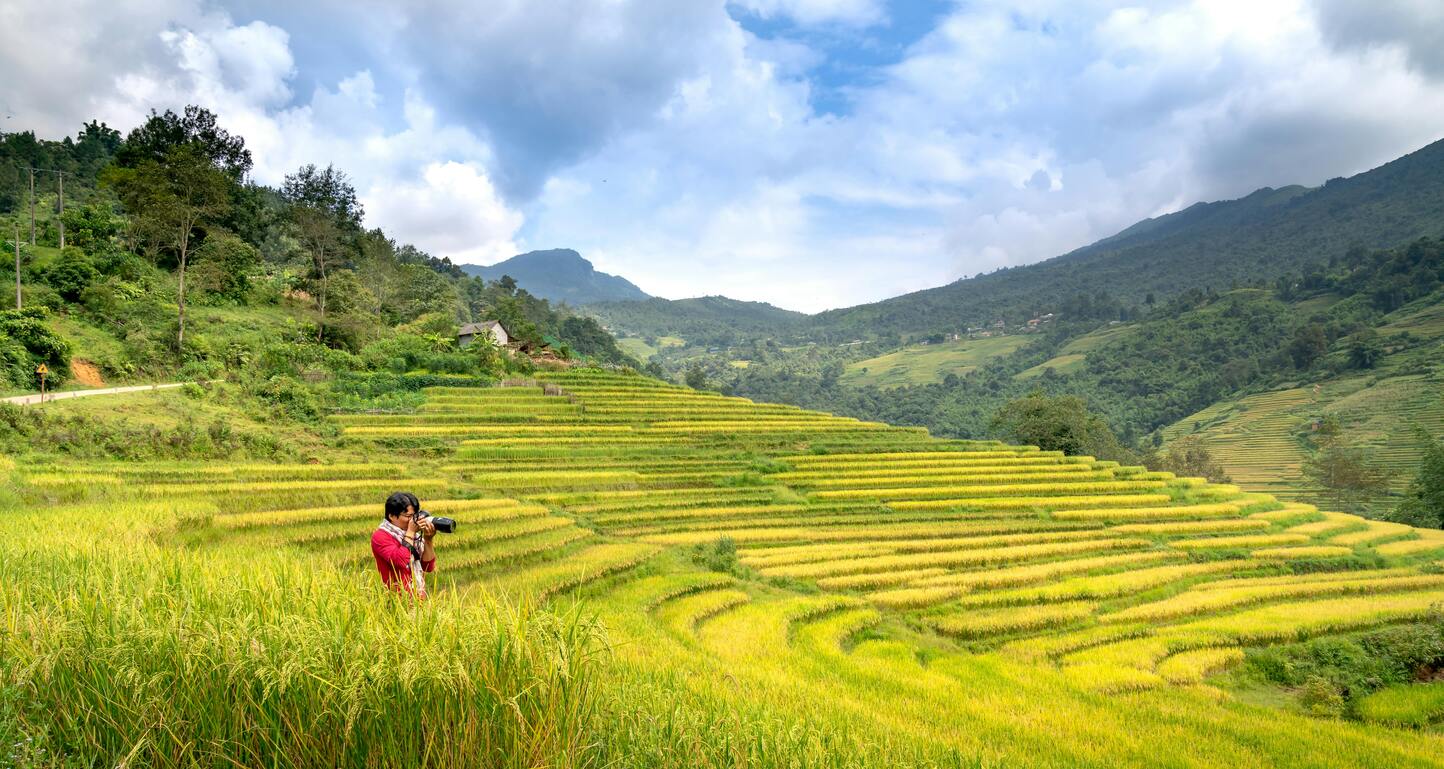
After years documenting rice terraces, we’ve developed strategies that maximize photographic success while minimizing wasted effort. Our photography-focused tours have served everyone from amateur enthusiasts to professional National Geographic contributors, refining our approach through direct feedback and results.
Equipment Reality Check
Wide-angle lenses get used most of the time, with only 20% of photos taken with telephoto lenses, and drones provide clearer and more impressive aerial shots than platform views.
This guidance proves accurate. Our 16-35mm lens sees 80% of use at rice terraces. The scale demands wide angles to capture the landscape’s full drama. Telephoto lenses serve specific purposes—isolating farmers in fields, compressing layers at sunset, capturing Red Yao women’s portraits—but wide angles create the iconic terrace images.
Regarding drones: China’s drone regulations change frequently and enforcement varies by location. Yuanyang and Longji have restrictions in certain zones, so check current regulations and obtain necessary permissions. We’ve seen enforcement vary from complete prohibition to casual acceptance. Always respect local rules and other visitors’ experiences.
Bring multiple batteries regardless of camera type. Cold temperatures drain batteries rapidly. Extra memory cards prevent the nightmare of running out of storage during optimal light conditions. Lens cleaning supplies handle the humidity and mist endemic to terrace environments.
The Three-Day Minimum Rule
Allow enough days for photography—at least 3 days ensures plenty of time for photos, staying there and getting to platforms 2 hours earlier to secure good angles.
We cannot overstate this guidance’s importance. Weather unpredictability requires buffer days. Single-night visits gamble everything on one sunrise and one sunset. Two nights provide two opportunities. Three nights offer the flexibility necessary for photographic success.
During our five-day Yuanyang visit, fog obscured days one and two completely. Day three provided acceptable conditions. Days four and five delivered spectacular sunrises with sea of clouds effects. Had we planned only two days, we would have left disappointed with zero usable photographs.
This lesson emerged painfully from early expeditions. One client group in 2018 booked only 36 hours at Yuanyang despite our recommendations for longer stays. Complete fog both mornings left them devastated—they’d traveled from Europe specifically for terrace photography. Since then, our standard itineraries always build weather contingency into schedules.
Composition Beyond Platforms
Viewing platforms provide convenient access and safe positioning. They also generate identical photographs that thousands of other travelers capture. Moving beyond platforms requires physical effort and local guidance but produces distinctive images.
Hire local guides who know the terraces intimately. During one Yuanyang morning, our Hani guide led us down narrow paths between terraced fields to a location where farmers were preparing fields. We photographed authentic agricultural work with the rising sun backlighting workers silhouetted against water-filled terraces. No platform could provide this perspective.
Similarly, in Longji, hiking between villages rather than shuttling between platforms revealed intimate scenes of daily village life. Elderly women carrying farming tools, water buffalo working fields, families harvesting rice together. These human elements transform landscape photography into cultural documentation.
Light and Timing Nuances
The “golden hour” applies universally, but rice terraces offer specific light characteristics worth understanding.
Professional photographers arrive at Bada Rice Terraces before 16:00 and head to the lower viewing deck for best shots of terraces, sea of clouds, and sunset. Early arrival matters as much for securing positions as for observing how light evolves.
We’ve learned that the hour before sunrise often provides more interesting light than sunrise itself. Pre-dawn blue hour with mist rising creates ethereal atmosphere photographs. Sunrise provides dramatic color but often harsh contrast. The hour after sunrise offers warm light with manageable contrast ratios.
Similarly, sunset colors typically peak 20-30 minutes after the sun drops below ridgelines. Lingering past obvious sunset timing captures the afterglow when terraces briefly glow with reflected sky light.
Practical Challenges Nobody Emphasizes
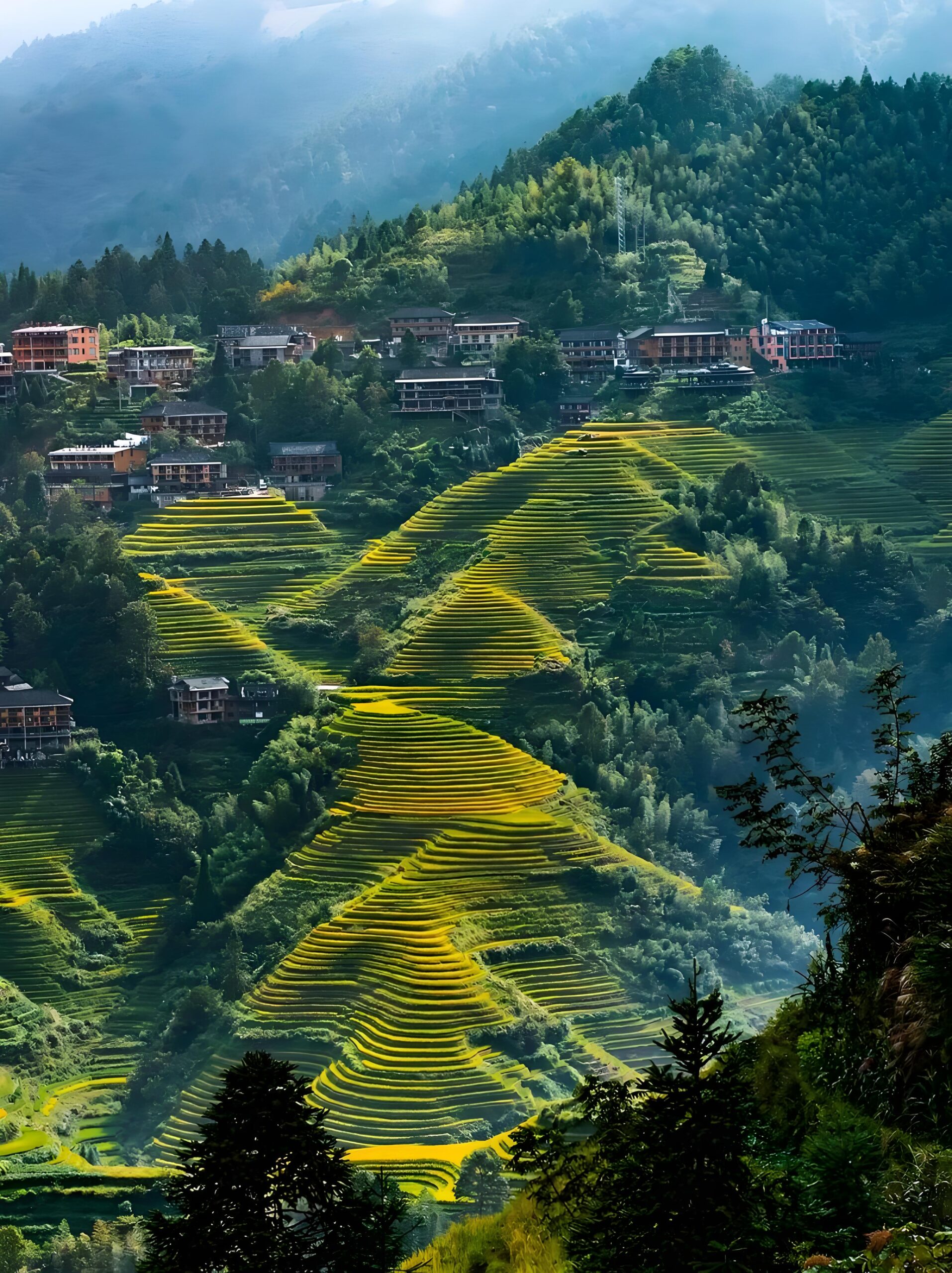
Beyond photography and sightseeing, rice terrace visits involve practical challenges that guidebooks minimize.
Physical Demands
Rice terraces occupy steep mountain slopes by definition. Every viewing area involves uphill walking on uneven stone steps. Cars and buses can only reach village entrances, requiring at least twenty minutes hiking up stone pathways to reach accommodations and scenic outlooks.
We’ve watched travelers dramatically underestimate these physical requirements. One elderly couple we encountered in Ping’an booked a village guesthouse without understanding the 45-minute steep uphill walk required. They abandoned their reservation and relocated to hotels near the parking area.
Assess physical capabilities honestly before booking accommodations deep in terrace villages. Uphill hikes with luggage after long bus journeys creates misery. Stone steps become slippery after rain. Altitude between 800-2,000 meters affects some visitors.
Altitude and Health Considerations
Terraces range from 400 meters at river valleys to 2,000 meters on mountains, with some slopes rising to 2,940 meters. These altitudes rarely cause serious altitude sickness but can cause headaches, breathlessness, and fatigue in sensitive individuals.
Carry basic first-aid supplies including altitude sickness medication, anti-diarrheal medication, and personal prescriptions. Remote villages lack medical facilities. Nearest hospitals sit in gateway towns requiring 1-3 hour drives.
Food and Dietary Realities
Dining options in Yuanyang are somewhat limited with no Western cuisine available, with restaurants mainly serving local specialties including red rice, braised fish, and chicken with spicy dipping sauce.
This assessment applies broadly to all terrace destinations. Village restaurants serve local cuisines prepared for local palates. Expect limited menus, no dietary customization, and ingredients sourced from surrounding farms. Vegetarians struggle finding protein sources beyond eggs and tofu. Allergies prove difficult to communicate effectively.
We’ve never experienced food-related illness at rice terraces, but food safety depends on freshly prepared dishes from recently harvested ingredients. Avoid uncooked vegetables and unpeeled fruits as standard precaution.
Restaurant timing operates on daylight schedules. Breakfast starts early for farmers. Dinner occurs at 18:00-19:00. By 20:00, village restaurants typically close completely. Late-night dining options don’t exist.
Responsible Travel Considerations
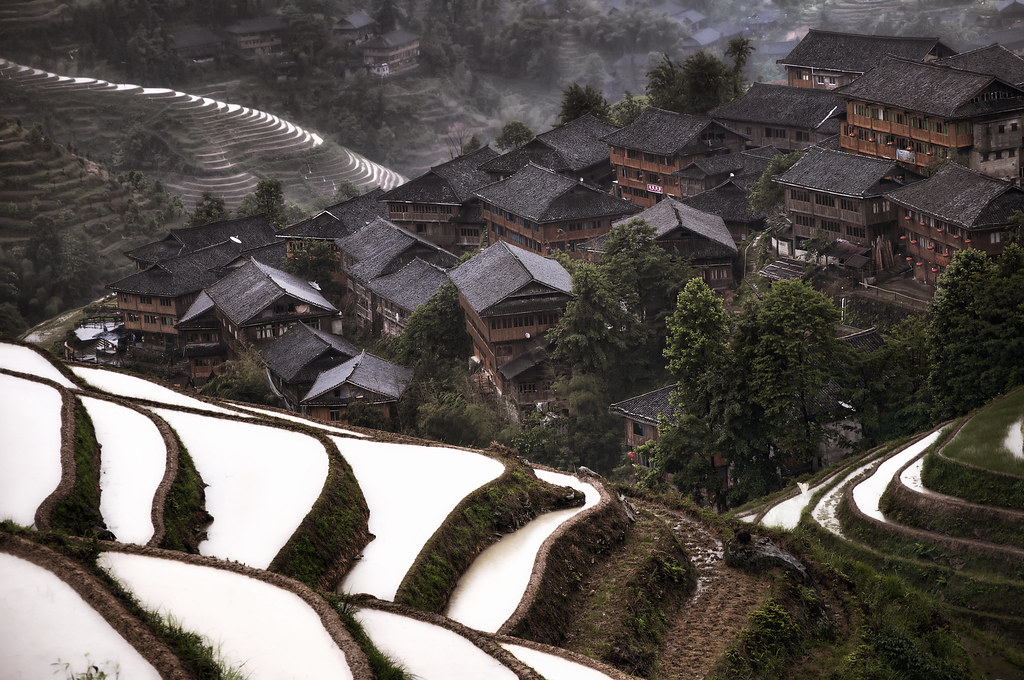
Rice terraces represent fragile ecosystems and living cultures requiring respectful engagement.
Environmental Impact Awareness
Filling Longji Rice Terraces with water requires the daily water consumption of 100 million people. This statistic emphasizes water’s precious role in terrace agriculture.
Stay on designated paths. Wandering through active terraces damages crops and irrigation systems requiring seasons to repair. The farming methods and natural irrigation systems using mountain springs are unique in rice culture deserving protection.
Carry trash out completely. We bring reusable water bottles and refuse single-use plastics when possible. Remote villages lack waste management infrastructure. Every plastic bottle or food wrapper left behind creates environmental burden.
Conserve water in accommodations. Long showers and wasteful practices directly impact communities’ limited water resources.
Cultural Sensitivity in Practice
Photography ethics extend beyond asking permission. We offer to email photographs to subjects, and many villagers appreciate seeing how they’re portrayed. Learn basic greetings in local languages—guides can teach simple phrases.
Dress appropriately covering shoulders and knees when visiting villages, especially during festivals or ceremonies. Respect farming areas by avoiding disturbing work in progress. When villagers are transplanting rice or repairing irrigation channels, observe from distances that don’t interrupt their tasks.
Support local economies through direct spending. Purchase from village shops rather than bringing supplies from cities. Hire local guides. Eat at local restaurants. Tourism should benefit communities sustaining these landscapes, not just extract photographic value.
The Over-Tourism Dilemma
Famous sites like Yuanyang and Longji increasingly struggle with visitor pressure. Consider lesser-known locations like Jiabang or Ziquejie rather than only visiting famous destinations. Visit during shoulder seasons when possible. Book through local operators rather than large international companies.
We recognize the paradox—this guide directs more travelers toward rice terraces while advocating sustainable tourism. The best resolution involves conscious choices spreading tourism benefits across multiple sites rather than concentrating pressure on already-strained locations.
Budget Planning: Real Numbers
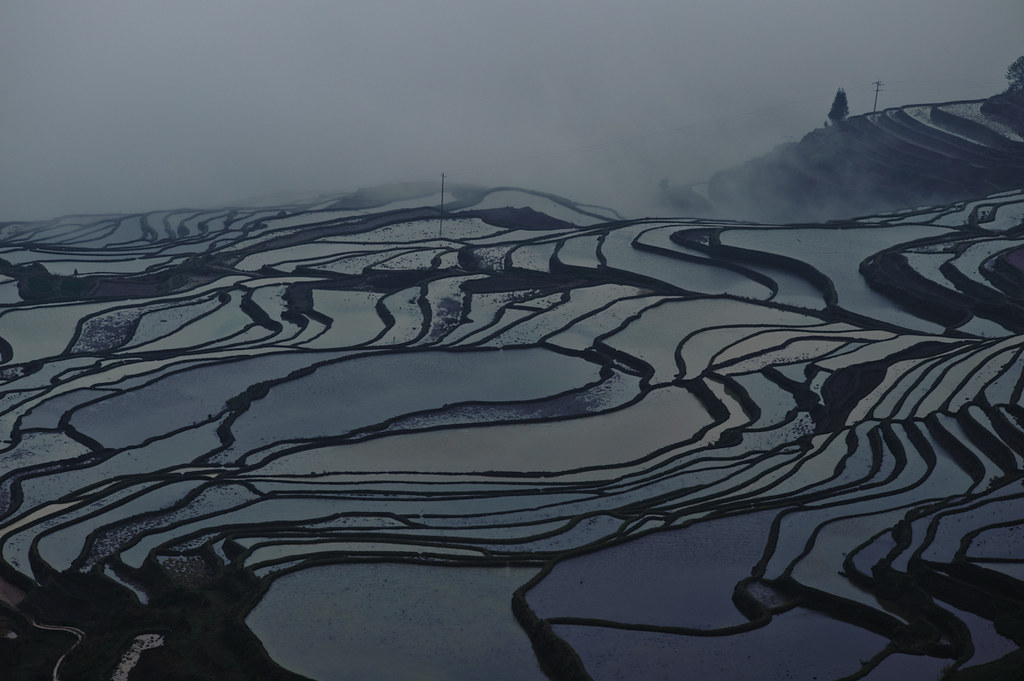
Understanding actual costs helps realistic planning.
Daily expenses for rice terrace visits vary significantly by season and comfort expectations. Budget travelers spending 350-700 RMB daily can visit comfortably using basic accommodations (100-200 RMB nightly), local restaurants (50-80 RMB daily), and public transport where available (100-200 RMB daily). Entrance fees add 80-180 RMB depending on location.
Mid-range travelers budgeting 800-1,500 RMB daily enjoy comfortable accommodations (250-500 RMB nightly), decent meals (100-150 RMB daily), and private drivers (300-500 RMB daily split among travelers). Guides add 400-600 RMB daily when desired.
Luxury travelers can spend 1,500-3,000 RMB daily on premium accommodations (600-1,200 RMB nightly), quality dining (200-400 RMB daily), and private guides (800-1,200 RMB daily). However, “luxury” at rice terraces means relative comfort, not five-star resorts.
Money-saving strategies based on experience: visit during shoulder seasons for lower accommodation prices, book directly rather than through platforms, eat at local restaurants frequented by villagers, share private driver costs with other travelers, and purchase combination tickets covering multiple viewing areas.
Common Questions Answered Honestly
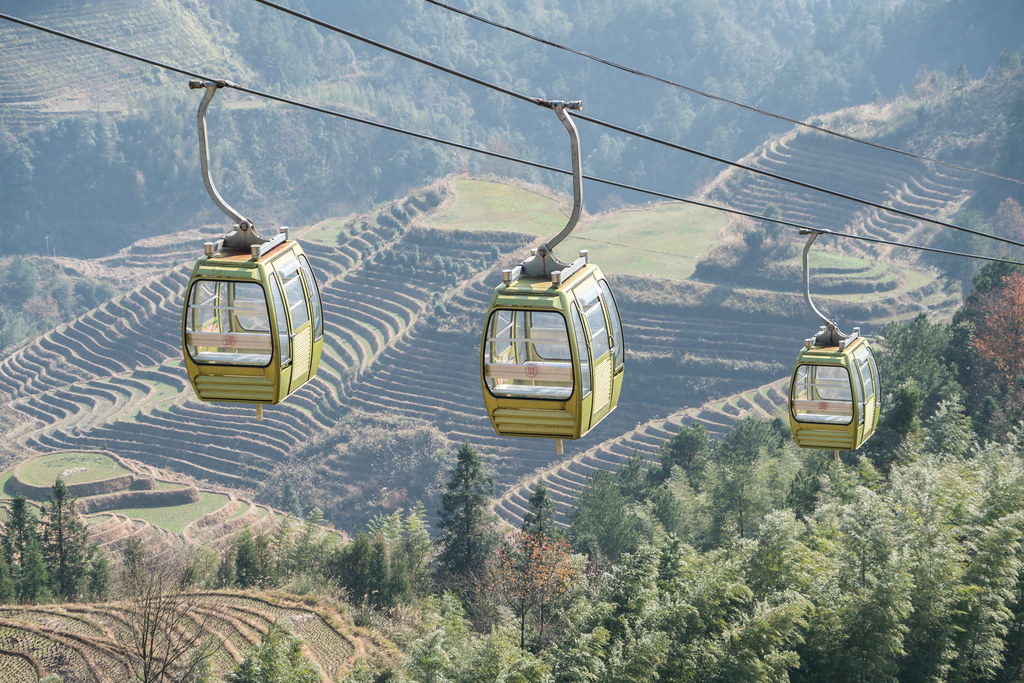
Will weather ruin my visit?
Possibly. Weather unpredictability represents the single biggest risk for rice terrace visits. Build extra days into itineraries. Stay flexible. Embrace whatever conditions nature provides.
Do I need a guide?
Not essential for Longji or Yuanyang with decent Chinese language ability. Highly recommended for Jiabang and Ziquejie. Invaluable for cultural understanding at all locations regardless of language skills.
Can families with young children visit?
Longji with cable cars works for families. Other locations involve challenging hiking on steep steps. Very young children and strollers prove impractical. Consider children’s patience for photography stops and early morning outings.
What about solo female travelers?
China’s rural areas are generally very safe with low crime rates. We’ve encountered numerous solo female travelers at all major terrace sites without safety concerns. Standard precautions apply—trust instincts, inform accommodation hosts about daily plans, carry charged phones.
How much Chinese language do I need?
Basic Mandarin helps significantly. Translation apps provide workable solutions. However, Jiabang and Ziquejie challenge non-Chinese speakers considerably. Consider hiring guides for language assistance.
Can I visit multiple terrace sites in one trip?
Absolutely. Combining Yuanyang with Jianshui creates excellent 7-10 day Yunnan circuits. Guilin-based trips easily combine Longji with Li River and Yangshuo. Guizhou trips can link Jiabang with ethnic minority villages. The key involves realistic travel time assessments—moving between sites consumes full days.
The Uncomfortable Truth About Rice Terrace Tourism
Rice terraces face uncertain futures. Climate change disrupts traditional rainfall patterns we’ve heard villagers express concern about. Youth migration depletes farming populations capable of maintaining labor-intensive terraces. Tourism provides alternative revenue but risks commercializing authentic cultures.
Every photograph we capture, every guide we hire, every guesthouse we book affects these delicate equilibria. Responsible travelers can support preservation through conscious choices—spending directly with communities, respecting agricultural work in progress, and sharing stories highlighting cultural significance rather than just scenic beauty.
Transportation Deep Dive: What Actually Works
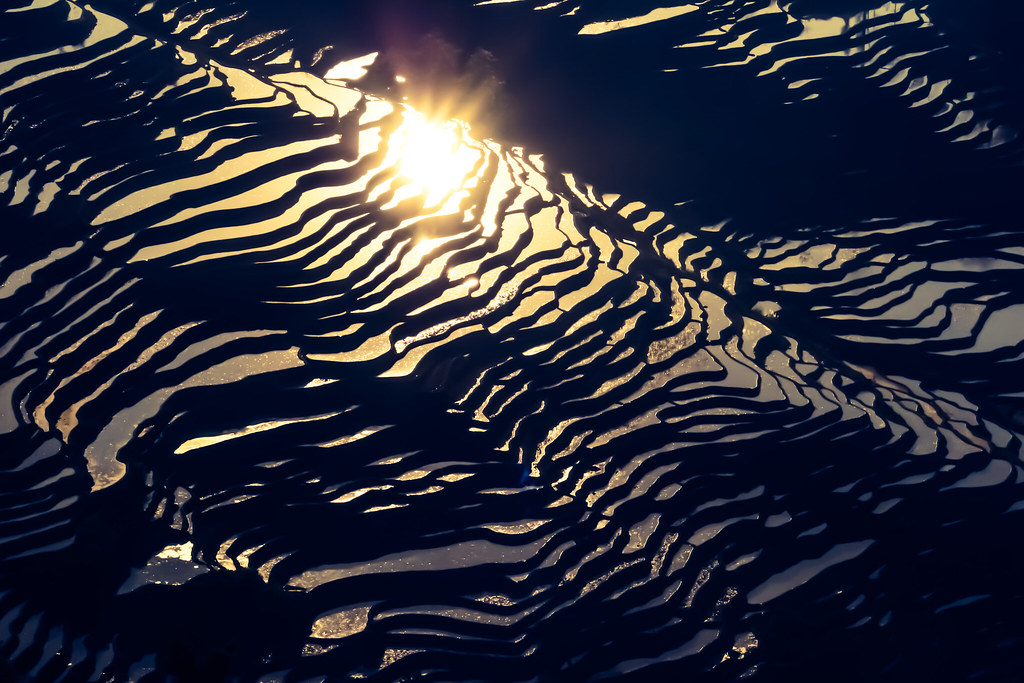
Generic advice saying “take a bus from City X to Village Y” oversimplifies transportation complexities that determine trip success.
Reaching Yuanyang From Kunming
Direct buses from Kunming South Bus Station to Yuanyang Xinjie Town run at 10:20, 12:30, and 19:00, taking 6-7 hours and costing 130-150 RMB. The overnight bus seems appealing for time efficiency but involves winding mountain roads that make sleep nearly impossible. We prefer daytime buses allowing scenery appreciation and arrival with energy for evening exploration.
Alternative routes through Jianshui add sightseeing opportunities but extend total travel time. Jianshui, a small town halfway between Kunming and the terraces, boasts over 1,200 years of history dating to Tang Dynasty. Breaking the journey there creates more relaxed pacing while adding cultural depth to the trip.
Private car hire from Kunming costs 800-1,200 RMB but provides flexibility for stops, luggage space, and faster travel times. For groups of three or four travelers, the per-person cost becomes reasonable while eliminating bus schedule constraints.
Navigating Longji’s Three Areas
The 76-100 kilometers from Guilin to Longji involves first reaching Longsheng County via bus or car. From Guilin Qintan Bus Station, frequent coaches run to Longsheng taking about 90 minutes and costing 20-25 RMB. At Longsheng, purchase tickets (80 RMB covering all three areas), then transfer to either Ping’an Village (18 km) or Dazhai Village (24 km).
Here’s where confusion occurs. The transfer vehicles operate on flexible schedules filling with passengers rather than fixed departure times. During peak seasons, waits rarely exceed 30 minutes. During quiet periods, departure might take 60-90 minutes. Budget patience and flexibility.
Within the terrace area, moving between Ping’an and Dazhai requires either hiking (approximately 4 hours) or returning to the transfer point and switching vehicles—effectively backtracking. Most travelers choose one base area rather than attempting both in single visits. We typically spend two nights in each area during extended trips, allowing thorough exploration without constant movement.
Conquering Jiabang’s Remote Access
The journey to Jiabang tests determination. From Guiyang, buses to Congjiang County take 6-7 hours through mountainous terrain. From Congjiang Bus Station, two daily coaches to Jiache Village depart at 08:40 and 12:30, adding another 2 hours.
Miss the 12:30 bus and you’re stranded until the next day. This reality forces precise coordination. We once missed the morning bus by fifteen minutes and spent an unexpected day exploring Congjiang—which actually revealed interesting Dong minority architecture but disrupted our careful schedule.
Private drivers offer alternatives for 400-600 RMB from Congjiang to Jiabang, eliminating schedule dependence. However, finding drivers willing to make the journey requires negotiation skills and ideally Mandarin language ability.
Conquering Ziquejie’s Navigation Challenge
Ziquejie’s transportation involves the most complexity. From Changsha, buses to Loudi take about 90 minutes. From Loudi to Xinhua County adds another hour. From Xinhua, just five daily coaches run at 07:20, 11:30, 12:30, 13:00, and 15:30 toward the terrace area, taking approximately 2 hours.
The reality involves even more complication—the buses don’t actually reach the terrace viewing areas, instead dropping passengers at junction points requiring additional private transport. This remote location is difficult to find, with even local drivers and guides potentially unfamiliar with it.
We hired a driver in Xinhua for the entire day at 300 RMB, giving flexibility to explore multiple viewing points. The driver initially claimed knowledge of Ziquejie but admitted uncertainty once we left main roads. Together we asked villagers for directions, consulted phone maps, and eventually found the terraces through persistence rather than clarity.
Accommodation Strategy That Matches Reality
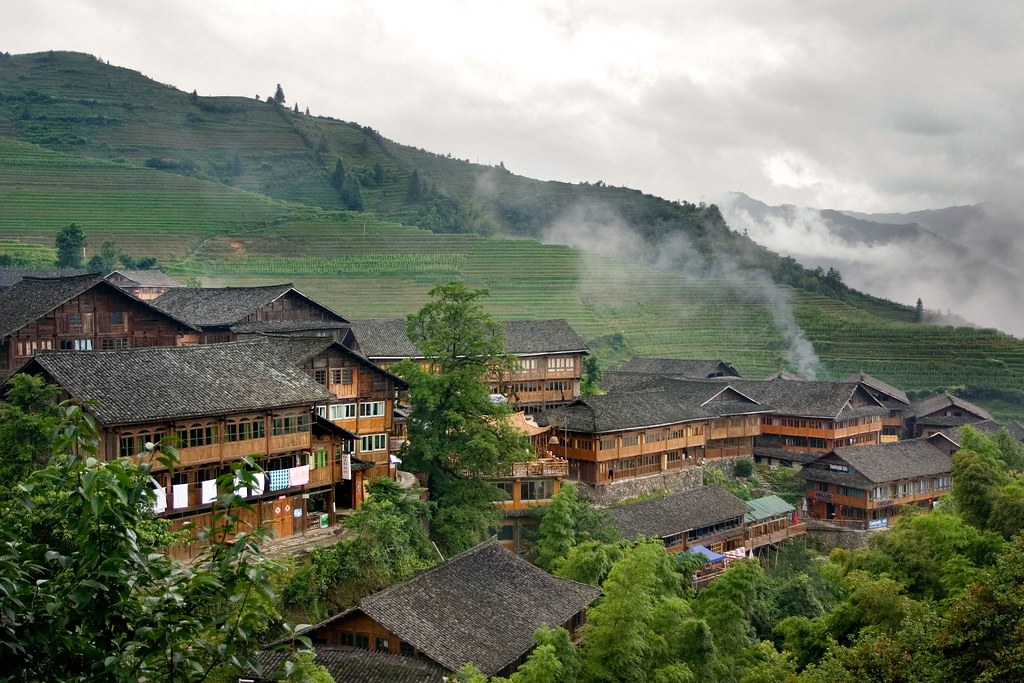
Where you sleep dramatically impacts daily experiences, yet accommodation guidance often remains frustratingly generic.
The “Stay in the Terraces” Advice
Every guide recommends staying within terrace areas for sunrise access. This advice holds true but requires understanding trade-offs. Within-terrace accommodations offer convenience and immersion at the cost of comfort and price.
At Yuanyang, staying in Duoyishu means rolling out of bed at 5:45 for 6:30 sunrise rather than 4:00 AM drives from Xinjie Town. The two-hour time difference seems luxurious until you experience the accommodation reality—basic rooms, temperamental hot water, limited electrical outlets, spotty WiFi, and breakfast consisting of rice porridge and pickled vegetables.
We’ve paid 350 RMB for Duoyishu rooms that would cost 150 RMB in gateway towns. The premium buys location, not comfort. Set expectations accordingly. These are functional shelters with spectacular views, not boutique hotels.
Gateway Town Benefits
Staying in gateway towns (Xinjie for Yuanyang, Longsheng for Longji, Congjiang for Jiabang) provides substantially better accommodation quality, more restaurant options, and lower prices. The sacrifice involves early morning transport to viewing areas.
For travelers prioritizing photography, the trade-off doesn’t work—early transport arrangements create stress and inflexibility. For travelers prioritizing comfort with casual sightseeing, gateway towns offer sensible solutions.
We typically split accommodations on longer visits—first nights in gateway towns allowing rest after long travel days, then moving to within-terrace stays for intensive photography periods, finally returning to gateway towns before departing to recover from cold dawn shoots and steep hiking.
The Booking Window Reality
Book 2-3 months ahead for September-October visits and during Chinese holidays, especially Spring Festival. Peak season accommodations sell out completely, leaving late bookers in compromised positions.
However, last-minute booking during off-peak periods sometimes yields better prices. Village guesthouses lack sophisticated booking systems and often prefer direct contact. We’ve negotiated favorable rates by calling guesthouses directly a week before arrival during quiet November periods.
Many small establishments lack online presence entirely. Having Chinese-speaking friends or guides contact them directly opens options invisible to international booking platforms.
Food Culture and Eating Strategy
Rice terrace dining involves more than sustenance—it represents opportunities for cultural understanding that photographs alone cannot provide.
Yuanyang’s Red Rice Reality
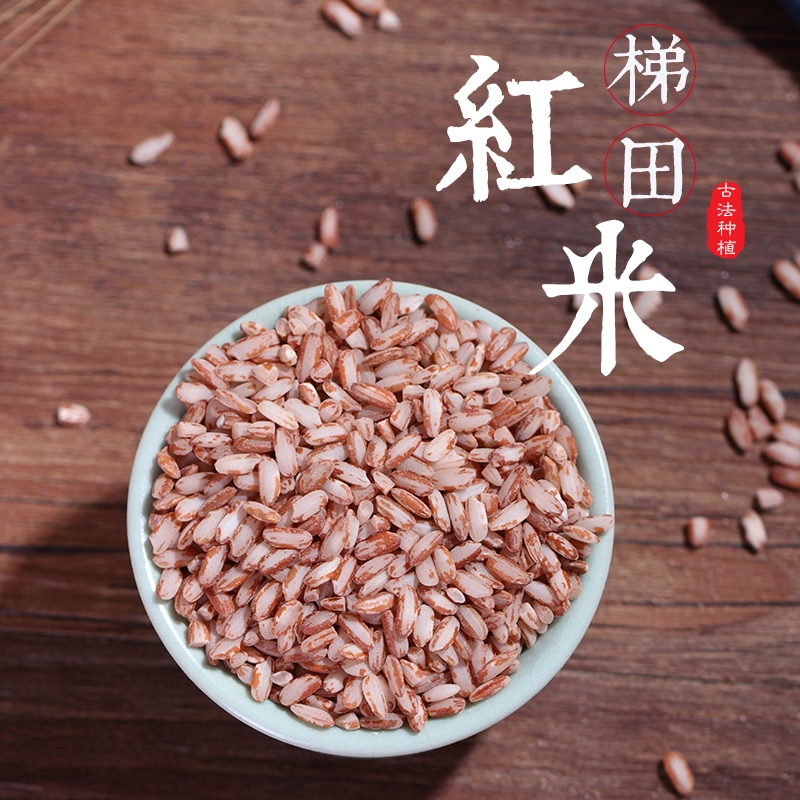
Red rice is Yuanyang’s unique feature, steamed and served with dishes as the most common preparation. Red rice noodles and red rice cake are definitely worth trying. The grain possesses nutty, slightly sweet flavor distinctly different from white rice varieties.
What guidebooks don’t mention: red rice’s tougher texture requires more chewing. The first bowl seems exotic and interesting. By the fifth consecutive meal, some travelers tire of it. We’ve learned to appreciate red rice in moderation—trying specialty preparations while occasionally requesting white rice for variety.
Local restaurants serve braised fish from rice fields, chicken with spicy dipping sauce, and various mountain vegetable preparations. Flavors tend toward mild compared to Sichuanese or Hunanese cuisines, reflecting Hani taste preferences. Spice levels remain manageable for most international palates.
Longji’s Bamboo Rice and Practical Concerns

Bamboo rice cooked in bamboo tubes represents Longji’s signature dish. The preparation involves stuffing rice with meat or vegetables into bamboo sections, sealing them, then roasting over fires. The bamboo imparts subtle flavor while keeping rice moist.
The presentation photographs beautifully. The taste proves pleasant but not revolutionary. More importantly, bamboo rice takes 30-45 minutes preparation time. Order upon arrival at restaurants rather than waiting until hungry.
Sticky rice wine, mountain mushrooms, and wild vegetables appear frequently on Longji menus. The wine packs surprising alcoholic punch despite sweet taste—approach cautiously if unaccustomed to homemade liquors.
Jiabang’s Rice-Fish-Duck Ecosystem on Your Plate

Jiabang’s ancient rice-fish-duck co-production system, listed as globally important agricultural cultural heritage, translates into distinctive dining. The polyculture produces rice, carp, and duck meat within integrated systems.
Local restaurants prepare carp from terraced fields with minimal seasoning, allowing natural flavors to dominate. The fish taste cleaner and sweeter than farm-raised varieties, reflecting the pure mountain spring water they grew in. Duck preparations similarly emphasize natural flavors.
Sour soup, a Miao specialty, features in many meals. The fermented base creates complex sourness quite different from vinegar or citrus tartness. Acquired taste territory—we found it intriguing initially but overwhelming by the third day.
Meal Timing That Actually Matters
Dinner often occurs earlier than Western standards, at 18:00-19:00, with restaurants potentially closing by 20:00 in villages. This schedule aligns with farming communities rising at dawn and sleeping soon after dark.
During our first Yuanyang visit, we attempted finding dinner at 20:30 after editing photographs. Every restaurant had closed. We ate instant noodles purchased from a village shop—an avoidable situation with better timing awareness.
Breakfast similarly operates on early schedules. Village guesthouses typically serve breakfast from 6:30-8:00. If departing for sunrise photography at 5:30, arrange breakfast boxes the previous evening or bring portable snacks.
Health Preparation Nobody Emphasizes Enough

Medical facilities in remote mountain villages are essentially nonexistent. The nearest hospitals sit in gateway towns 1-3 hours away. Serious emergencies require evacuation to provincial cities.
Medication and First Aid Essentials
We carry comprehensive first-aid kits including bandages, antibiotic ointment, pain relievers, anti-diarrheal medication, altitude sickness medication, antihistamines, and personal prescriptions. This preparation has proven necessary multiple times.
During one Longji visit, we developed severe blisters from new hiking boots combined with rain-slicked stone steps. Without bandages and moleskin, the remaining days would have been miserable. Another time, a traveling companion developed altitude headaches at Yuanyang requiring medication we fortunately carried.
Bring substantially more medication than seemingly necessary. Running out in remote villages means suffering until reaching towns with pharmacies. Chinese pharmacies stock many medications over-the-counter that require prescriptions elsewhere, but explaining symptoms in Mandarin adds complications.
Digestive System Realities
We’ve never experienced serious food-related illness at rice terraces, but digestive adjustment periods are common. The dramatic dietary changes—different water, unfamiliar ingredients, varying spice levels—affect most travelers initially.
Anti-diarrheal medication provides peace of mind. Probiotic supplements taken preventatively may help adjustment. Staying hydrated remains crucial, especially during physical hiking at altitude.
Avoid uncooked vegetables and unpeeled fruits as standard precaution. Drink bottled or boiled water exclusively. These basic hygiene practices prevent most issues.
Physical Fitness Assessment
Terrace visits demand moderate fitness levels that sedentary travelers underestimate. Reaching Viewing Platform No. 1 at Longji requires approximately three hours uphill hiking on steep stone steps. Azheke village access involves two-hour hikes from Duoyishu.
We’ve observed travelers dramatically struggling with these physical demands. One couple in their 60s we encountered at Dazhai required multiple rest stops climbing to Platform 2, transforming a 90-minute hike into a three-hour ordeal. They completed it successfully but exhausted.
Assess physical capabilities honestly. Consider cable car options at Longji. Choose less physically demanding sites if hiking limitations exist. The terraces reward effort but unpreparedness creates misery rather than achievement.
What We’d Tell Our Best Friend Planning Their First Visit
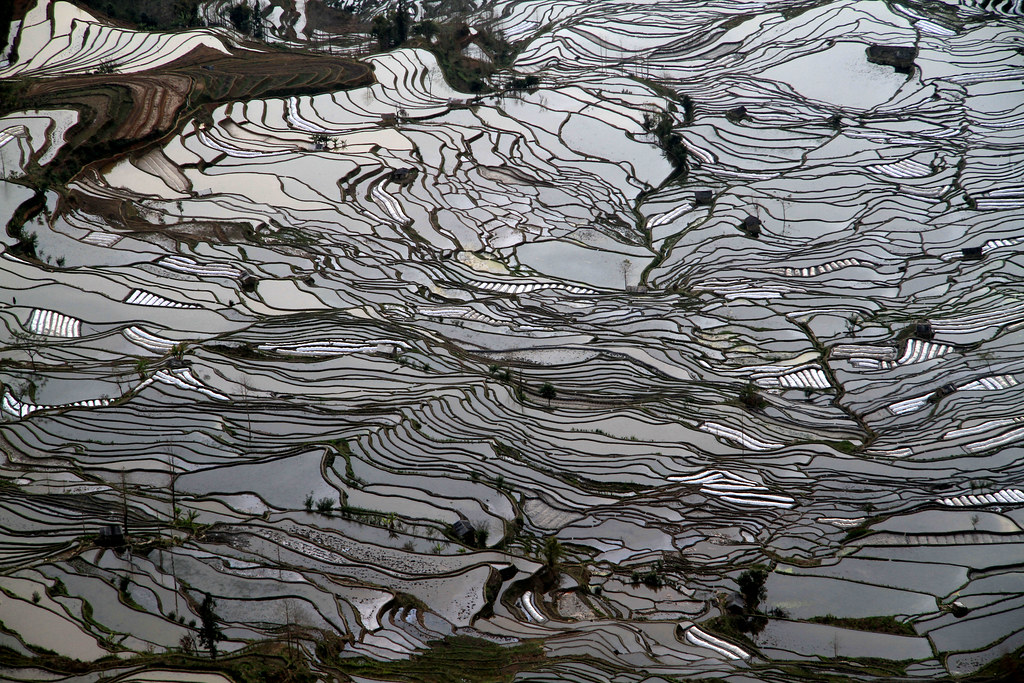
After years exploring China’s rice terraces and numerous mistakes, we’d share these hard-earned insights with friends planning first visits.
Start with Yuanyang if photography drives your interest. The scale and drama justify the effort despite crowds and commercialization. Allocate minimum four days allowing weather flexibility. Stay within the terrace area despite basic conditions. Hire a local guide for at least one day gaining cultural context and hidden locations.
Choose Longji for balance between accessibility and beauty. The infrastructure supports comfortable visits while terraces provide stunning landscapes. If mobility concerns exist, Longji’s cable cars enable access impossible at other sites. Dedicate three days exploring both Dazhai and Ping’an.
Select Jiabang for authentic cultural immersion prioritizing experience over comfort. The remote location filters casual tourists, leaving genuine interactions and pristine landscapes. Accept basic accommodations and limited food options as trade-offs for authenticity. Plan minimum four days given difficult transportation.
Avoid Ziquejie unless truly adventurous with Mandarin language abilities. The terraces are magnificent but access challenges overwhelm most travelers. Consider it for second or third terrace trips after experiencing more accessible locations.
Visit during shoulder seasons when possible—November and late March-early April offer favorable weather with manageable crowds and reasonable prices. Peak autumn golden season justifies premium costs and competition for locations. Winter delivers photography excellence requiring cold weather tolerance.
Build flexibility into schedules. Weather unpredictability affects all locations. Fixed itineraries gamble everything on specific day conditions. Loose schedules adapting to actual conditions produce better results and less stress.
Invest in quality waterproof hiking boots. The single most important gear decision beyond cameras. Stone steps become treacherous when wet, and rain occurs frequently at these mountain locations.
Approach rice terraces with cultural humility rather than tourist entitlement. These are living agricultural landscapes, not theme parks. Farmers working fields deserve respect and space. Villages maintaining terraces merit economic support through conscious spending.
The Deeper Value Beyond Photographs

The most meaningful rice terrace moments for us have occurred away from viewpoints and camera clicks. Sharing tea with a Hani grandmother explaining how her family maintained the same terraced fields for seven generations. Watching a Red Yao wedding ceremony in a Longji village where we were unexpected but welcomed guests. Helping Miao farmers transplant rice seedlings in Jiabang fields, understanding through aching backs the labor behind every grain.
These experiences transcend tourism. They connect us to agricultural traditions sustaining human civilization, to minority cultures preserving unique identities against homogenizing pressures, to ecosystems demonstrating sustainable harmony between humanity and nature.
China’s rice terraces face uncertain futures. Climate change disrupts traditional patterns. Economic development draws young people away from farming. Tourism brings both opportunities and threats. The terraces we photograph today may not exist unchanged in twenty years.
This impermanence adds urgency but also responsibility. Every visitor impacts these fragile systems. Responsible travelers recognize their presence affects communities and landscapes, making conscious choices that support rather than exploit.
When you stand at dawn watching mist rise from water-filled terraces, when you photograph golden rice glowing in sunset light, when you walk narrow paths between ancient stone walls—remember you’re witnessing human achievement spanning centuries. These landscapes represent accumulated wisdom, relentless labor, and cultural identity. They deserve respect matching their beauty.
Practical Planning Checklist
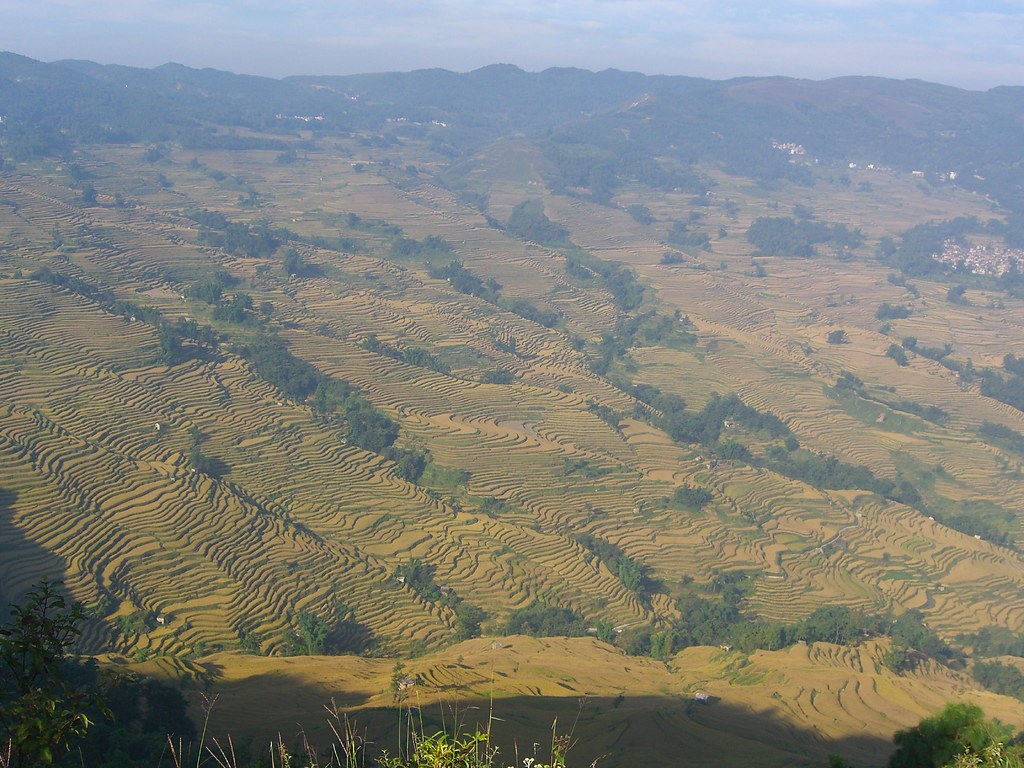
Before booking flights, verify these essential elements ensuring realistic trip planning.
Confirm current visa requirements for your nationality, as policies change periodically. Allocate minimum four days per terrace site visited, with five days preferred for weather flexibility. Book accommodations 2-3 months ahead for September-October and holiday periods. Research current drone regulations if aerial photography interests you, as rules and enforcement vary.
Download offline maps for terrace regions where connectivity becomes unreliable. Install translation apps with offline Chinese language packs. Arrange travel insurance covering medical evacuation and trip cancellation. Bring cash in RMB as remote villages lack ATMs and card readers.
Purchase waterproof hiking boots weeks before travel, breaking them in thoroughly to prevent blisters. Pack layered clothing accommodating temperature ranges between 5-30°C depending on season and elevation. Include waterproof jacket regardless of visit timing, as mountain weather changes rapidly.
Carry comprehensive first-aid supplies and personal medications in quantities exceeding trip duration. Bring portable chargers and extra camera batteries, as electricity access may be limited. Pack reusable water bottles and snacks for early morning photography sessions and long hikes.
Contact accommodations directly 1-2 weeks before arrival confirming bookings and inquiring about current conditions, harvest timing, and weather patterns. This communication provides valuable intelligence for day-to-day planning.
Accept that some plans will change. Transportation delays occur. Weather disrupts schedules. Unexpected opportunities arise. Flexibility transforms potential frustrations into memorable adventures.
Final Perspective: What Rice Terraces Taught Us
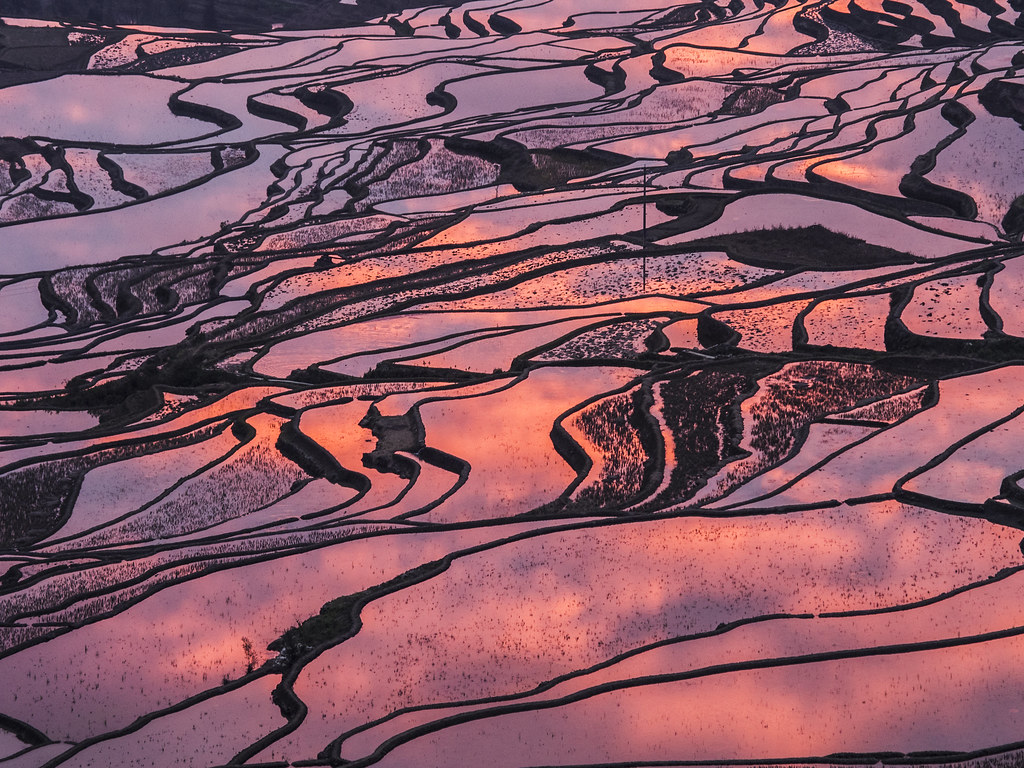
Standing at Yuanyang’s Duoyishu platform at dawn, surrounded by photographers jostling for positions, we initially felt frustrated by crowds compromising the serene experience we’d imagined. Then we noticed the farmers walking through fields below, beginning their day’s work as the sun illuminated terraces they’ve maintained for generations.
The photographers would leave by 8:00 AM, their memory cards full. The farmers would remain all day, repairing irrigation channels, tending crops, maintaining an agricultural system predating modern civilization. We realized the terraces weren’t performing for tourists—we were privileged witnesses to continuing traditions.
This perspective shift transformed our rice terrace experiences. We began prioritizing cultural understanding over photographic achievement. Spending time with local guides learning agricultural practices. Participating in village festivals celebrating harvests. Supporting local economies through conscious spending.
The photographs still matter—they share these landscapes’ beauty with wider audiences. But they represent outcomes rather than objectives. The real value lies in connections made, knowledge gained, and responsibilities acknowledged.
China’s rice terraces offer rewards proportional to effort invested. They demand patience with weather, tolerance for basic conditions, acceptance of physical challenges, and respect for living cultures. They repay these investments with experiences transcending ordinary tourism.
When you visit—and we genuinely hope you do—approach these landscapes with curiosity and humility. Take your photographs. Enjoy the stunning vistas. But also talk with farmers, eat local food, support community businesses, and recognize your presence impacts fragile systems. Travel responsibly, spend consciously, and share stories emphasizing cultural value beyond scenic beauty.
The rice terraces have existed for centuries before our arrival. With thoughtful tourism, they may persist for centuries after. That continuity depends partly on how we choose to engage with them today.
About Travel China With Me: We’ve spent decades exploring China’s remote regions with particular focus on ethnic minority areas and agricultural heritage sites. Our team combines local expertise with international travel perspectives, creating culturally immersive experiences that benefit visited communities while providing meaningful journeys for travelers. We specialize in customized itineraries emphasizing authentic engagement over superficial tourism. Contact us to design your rice terrace adventure.


